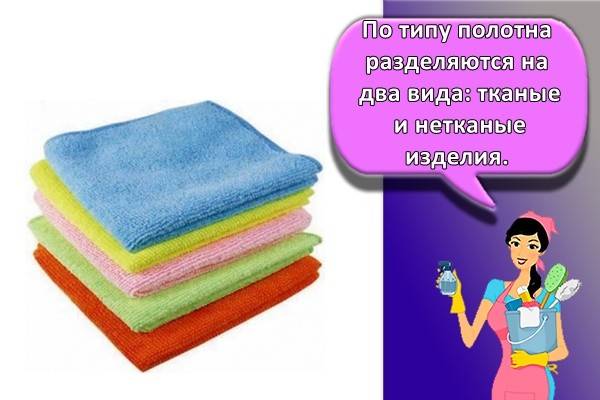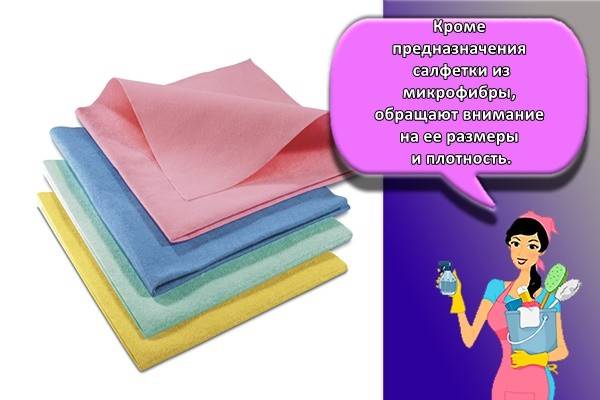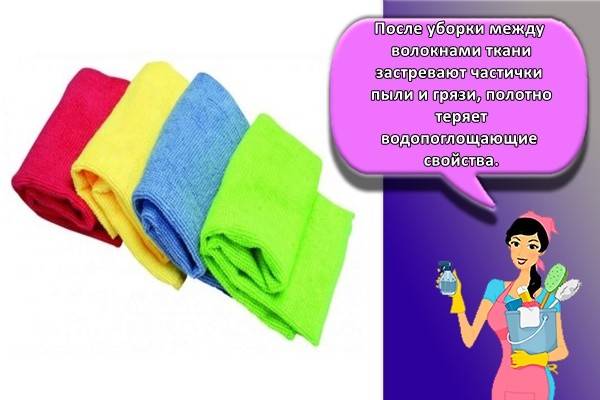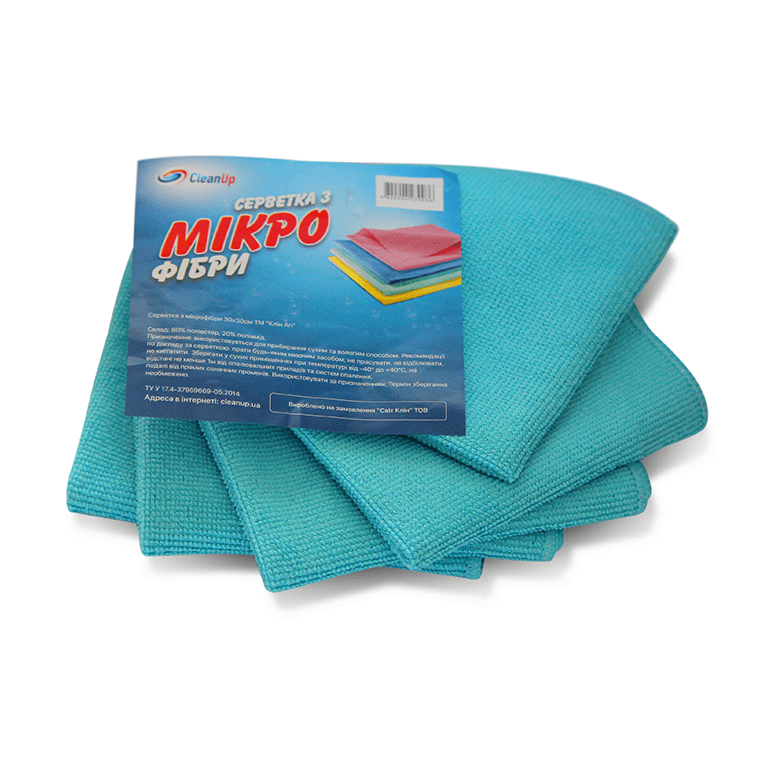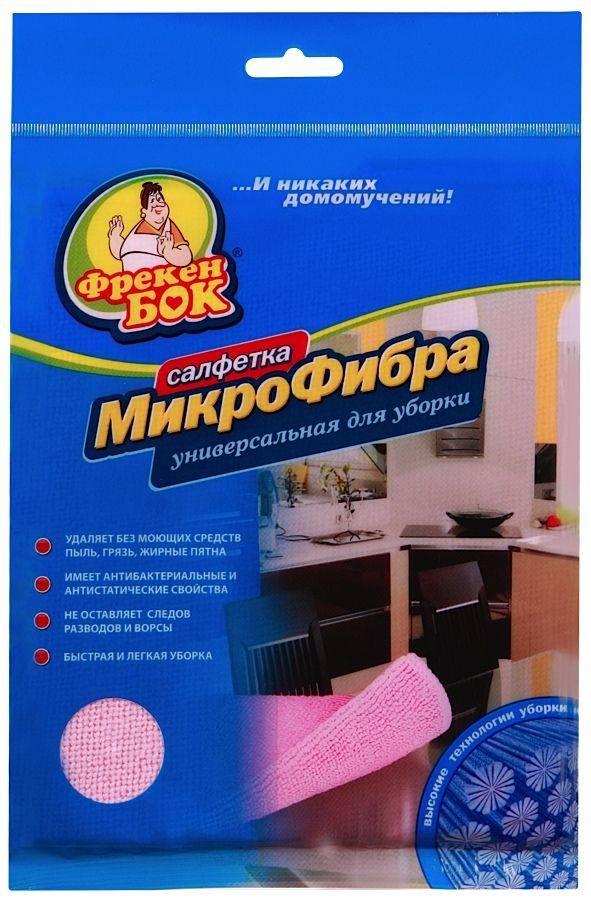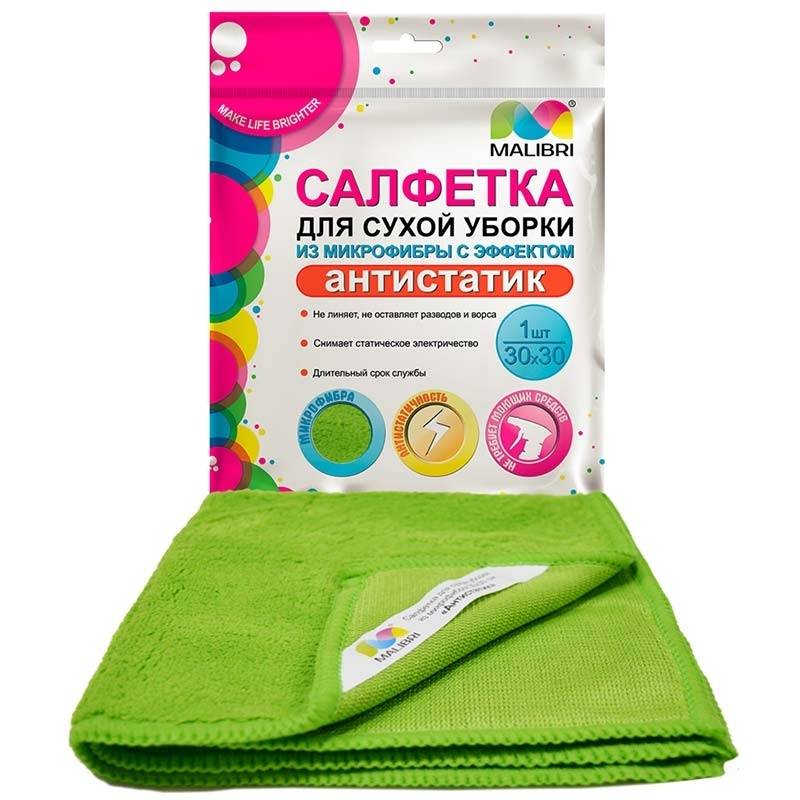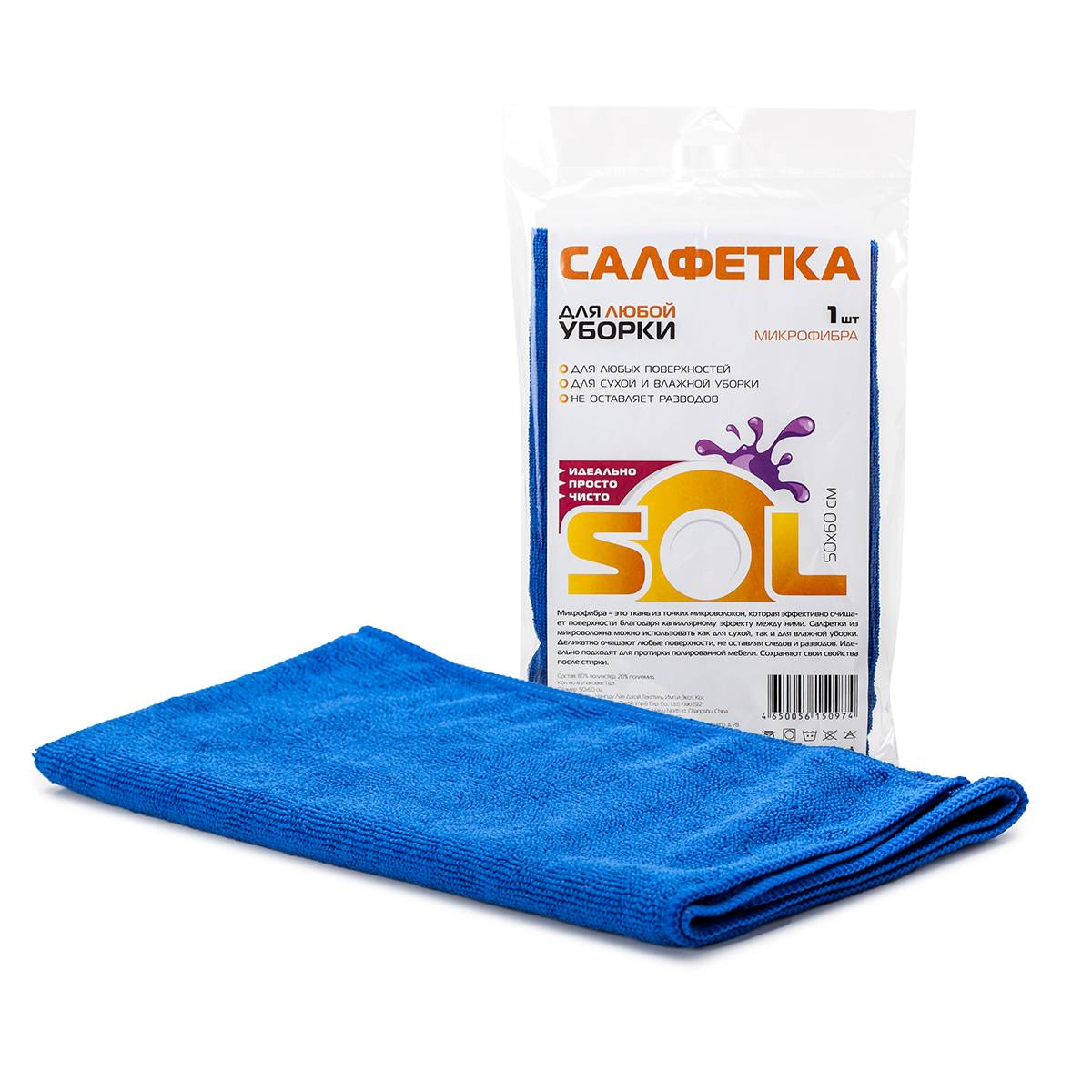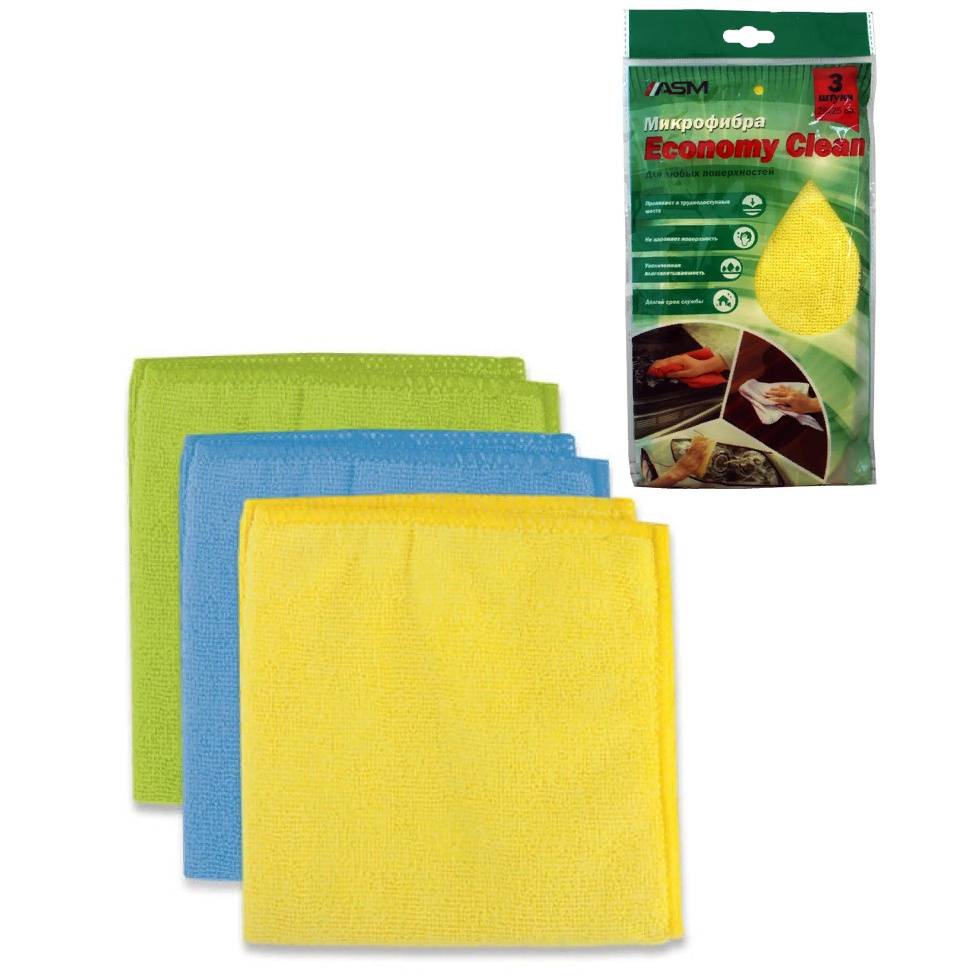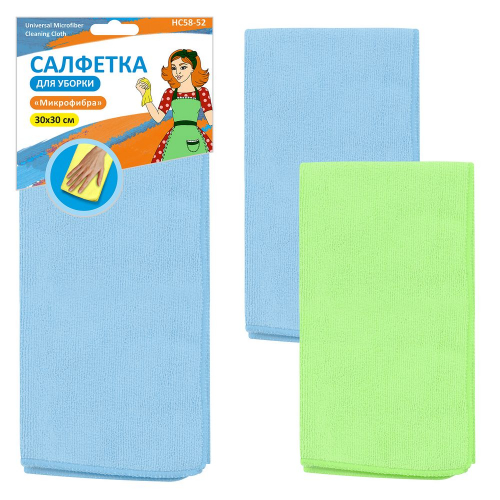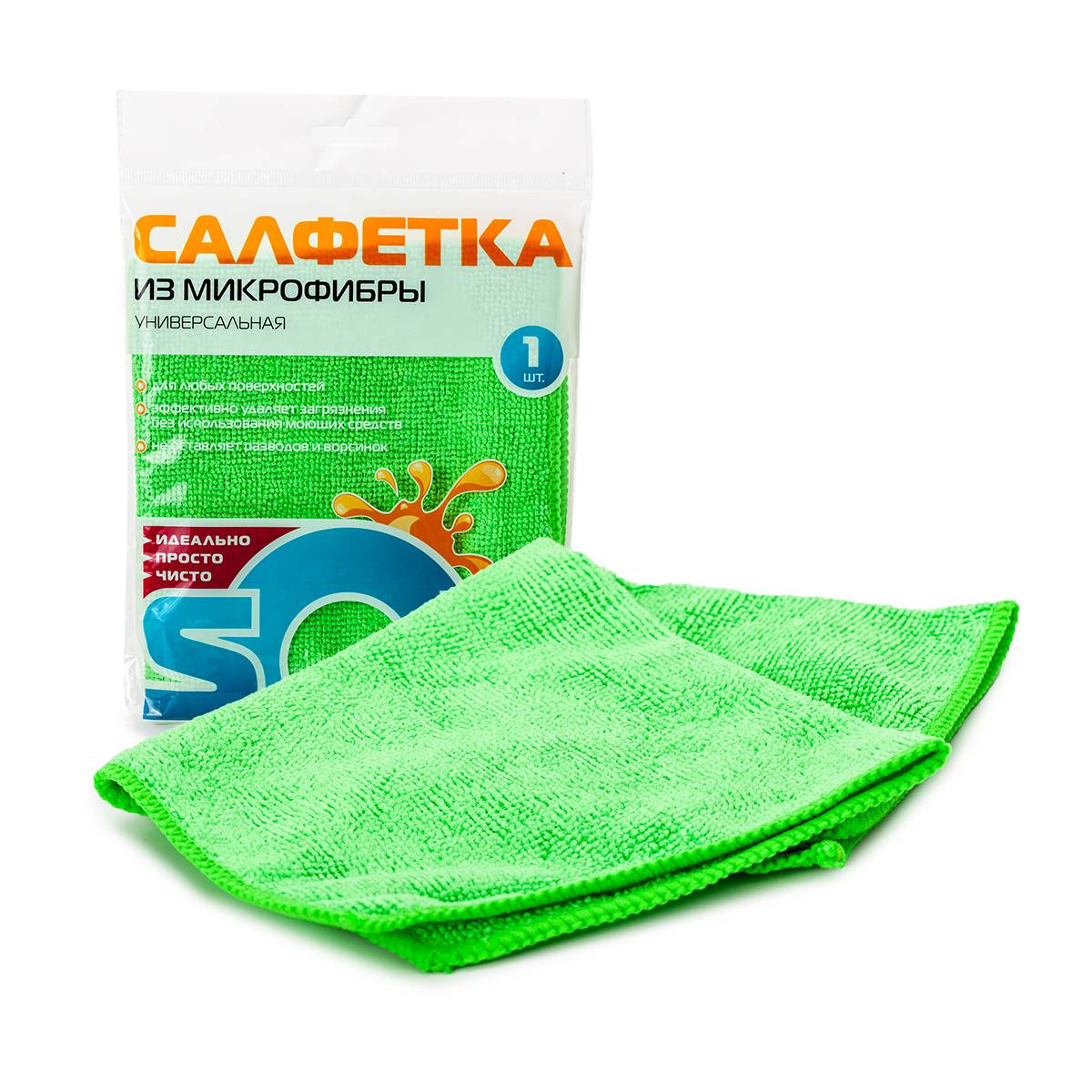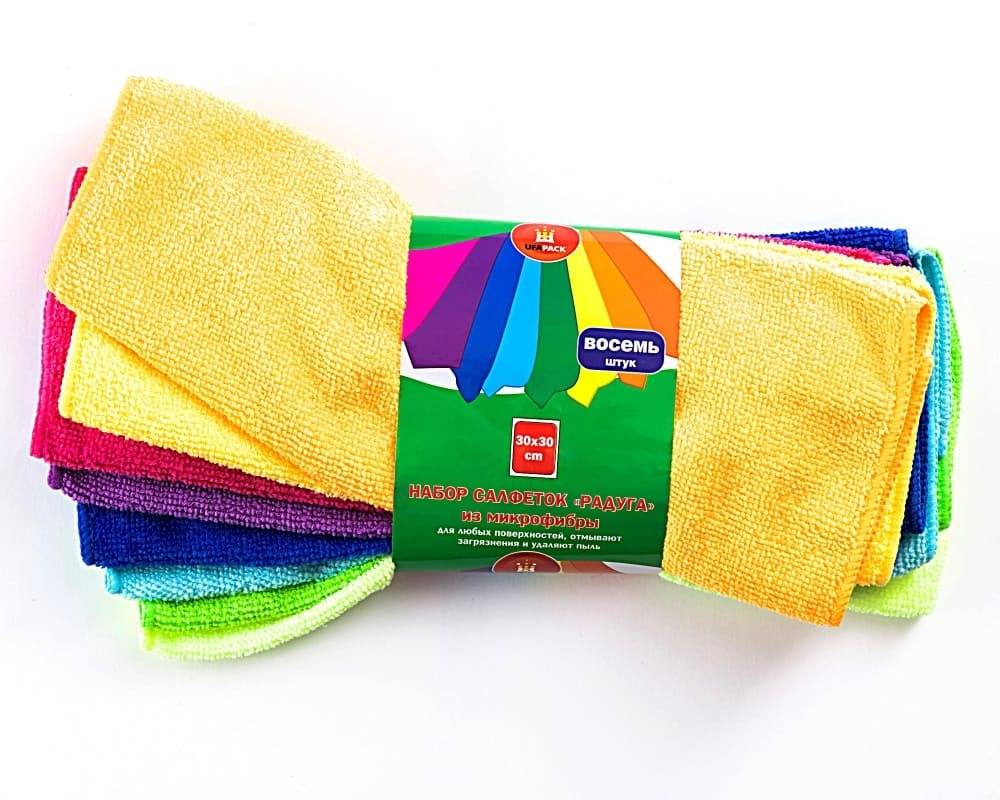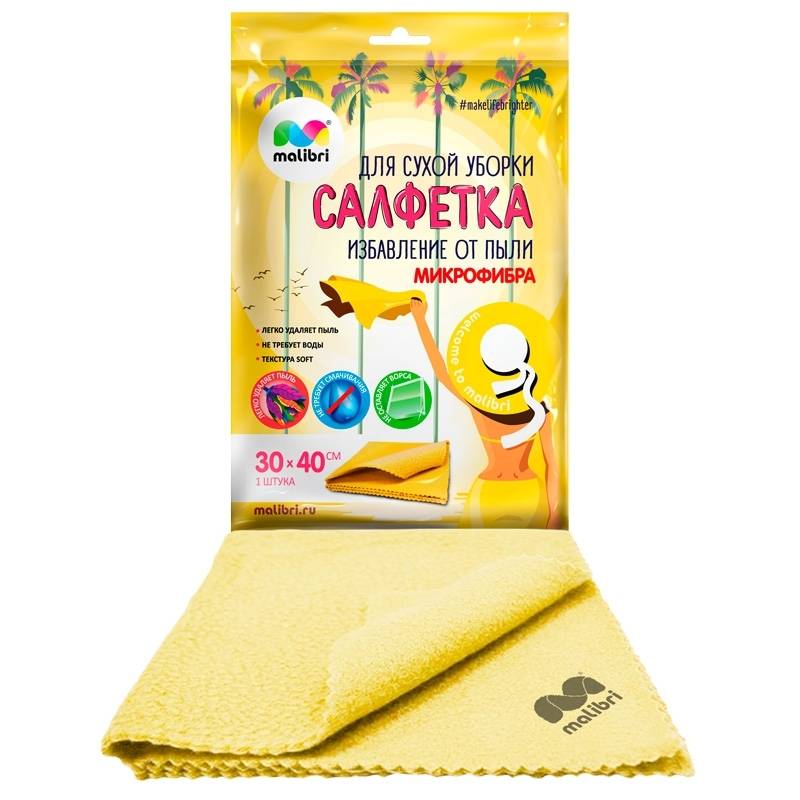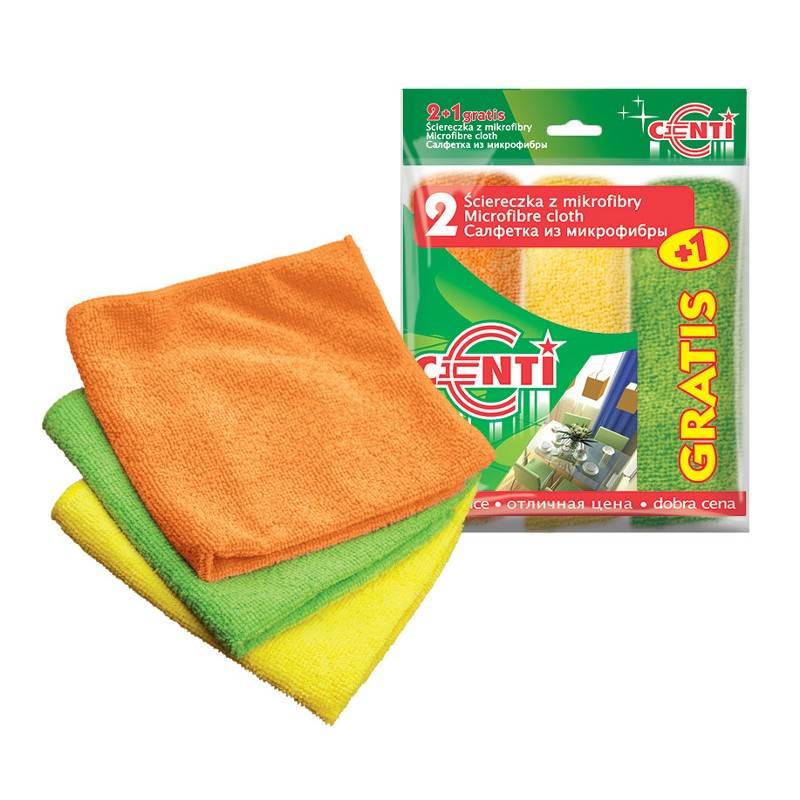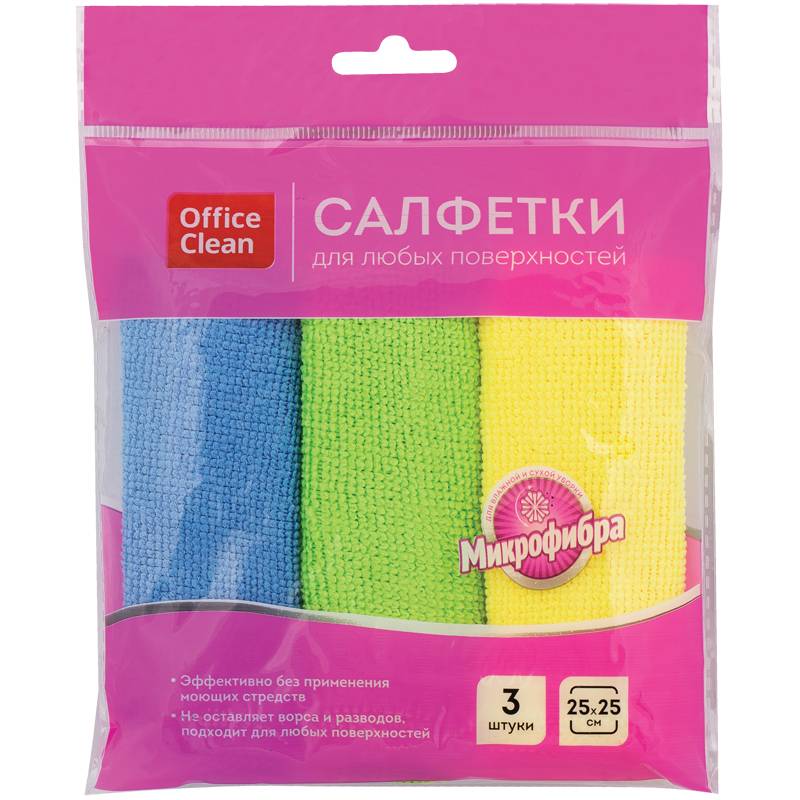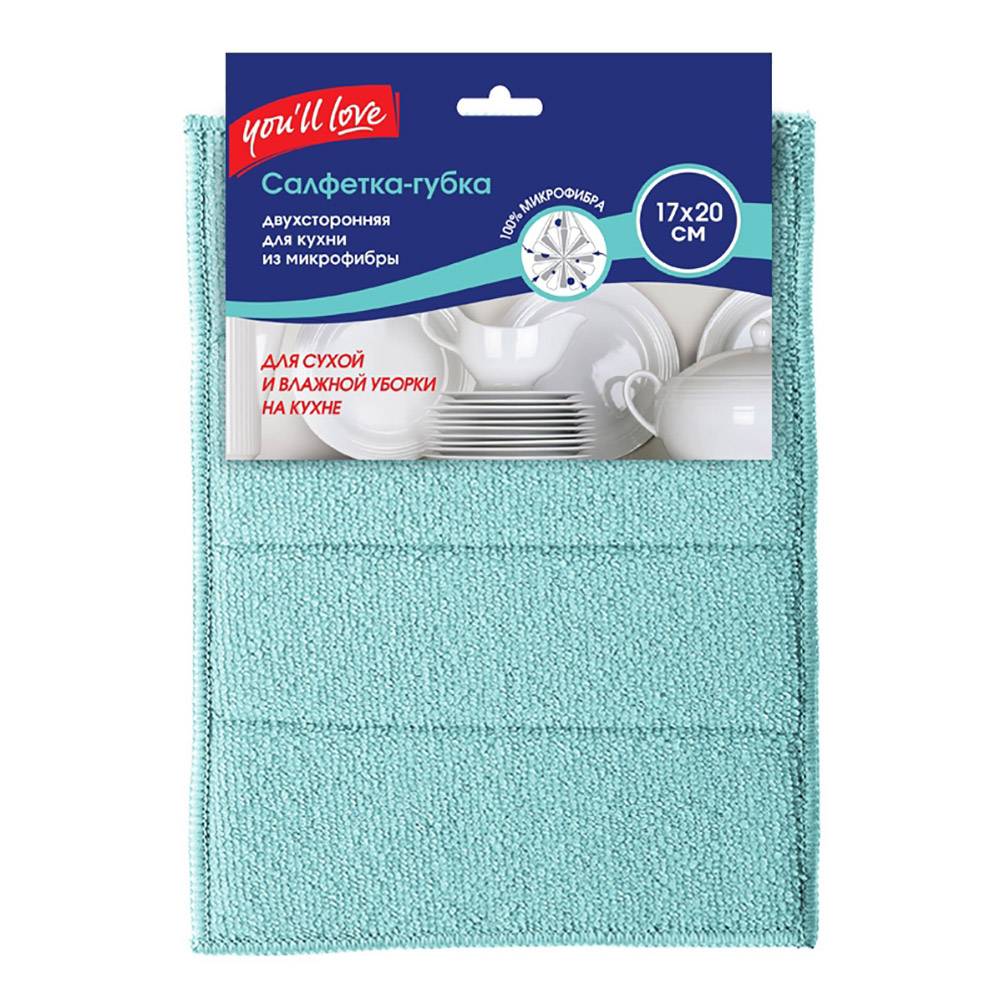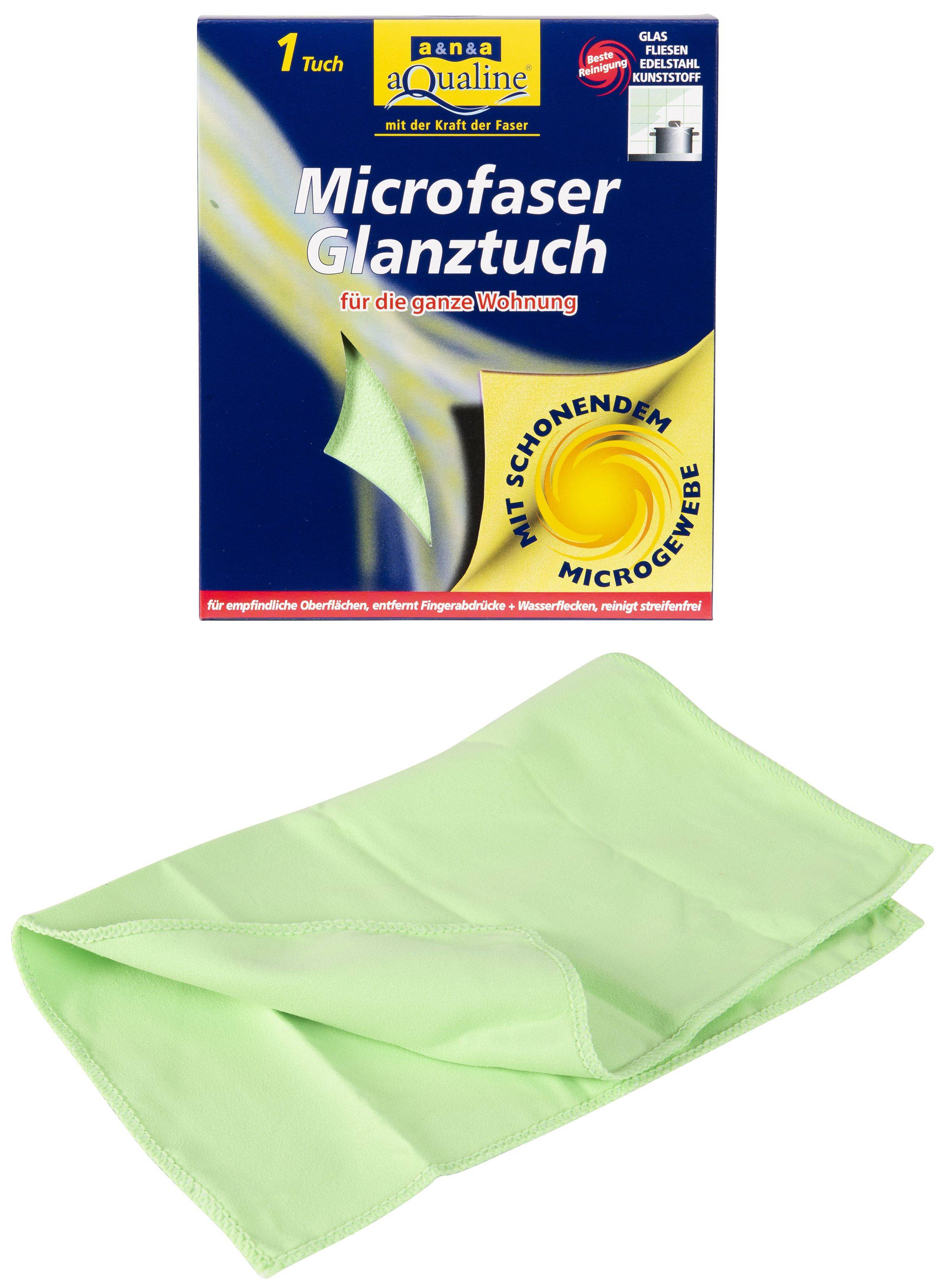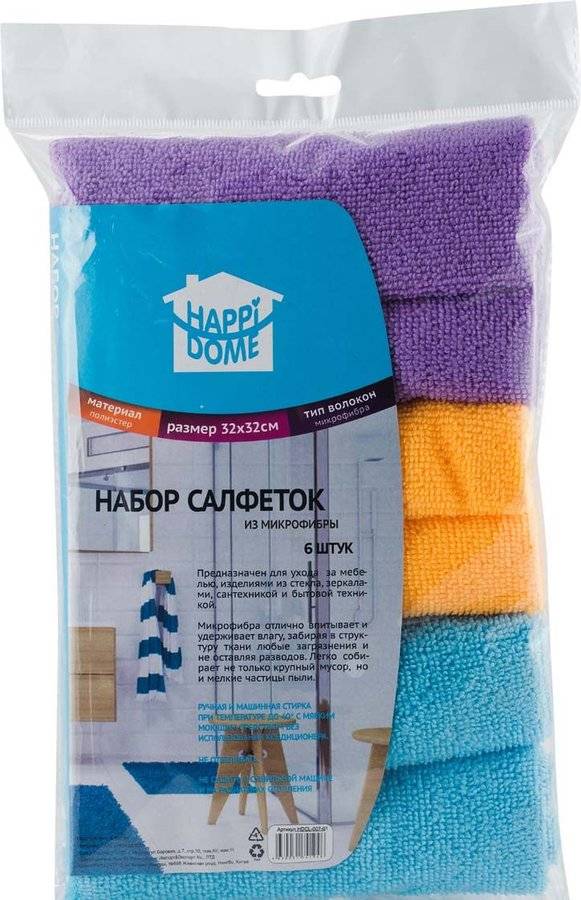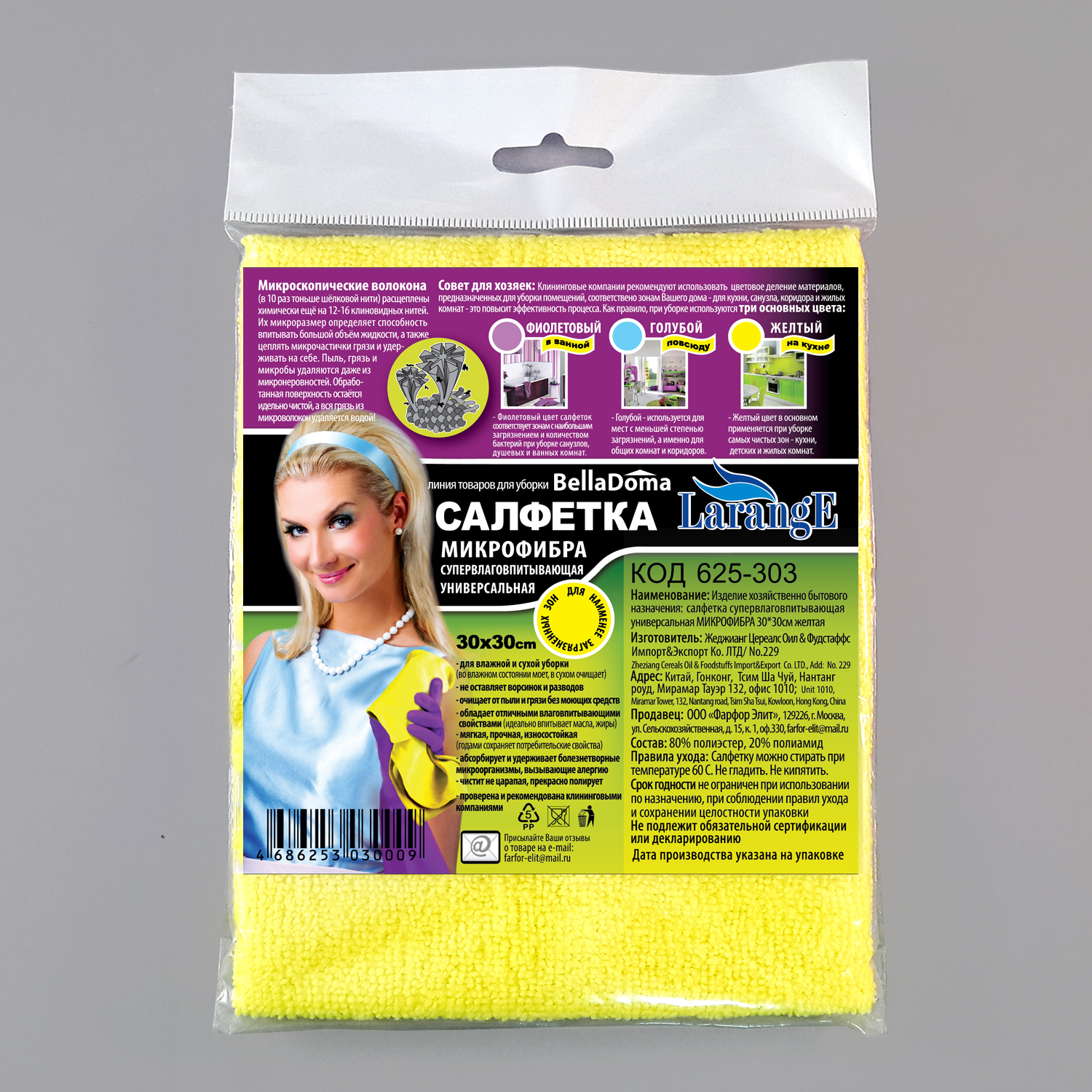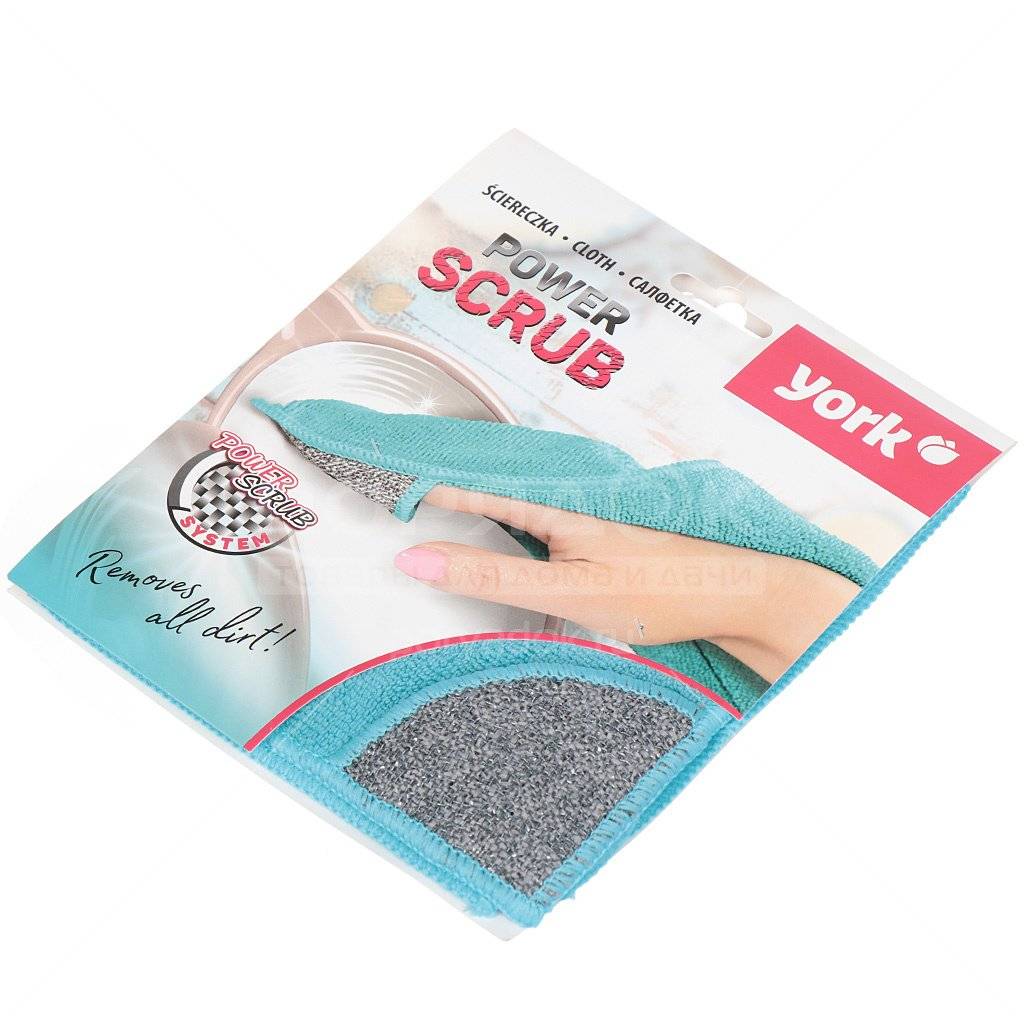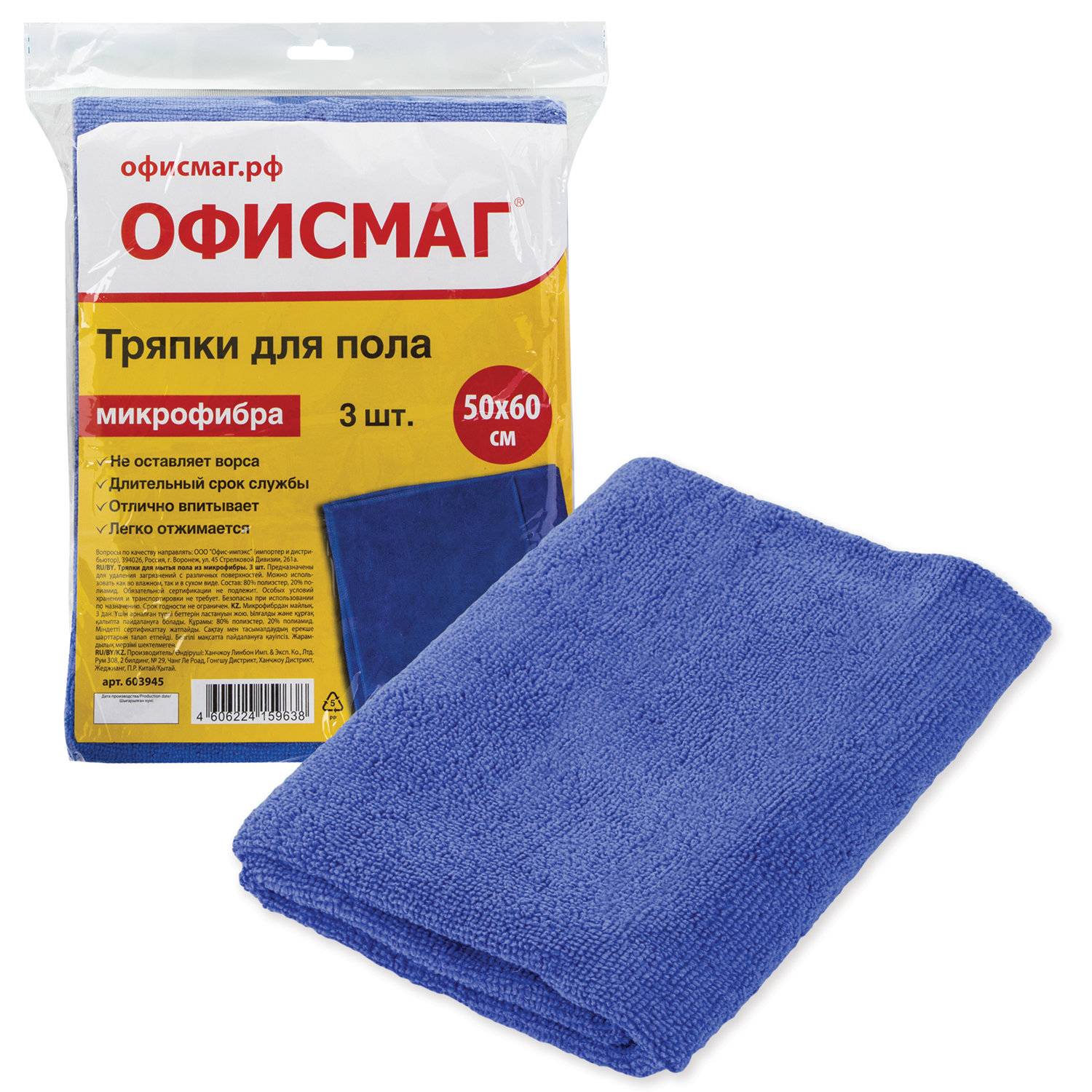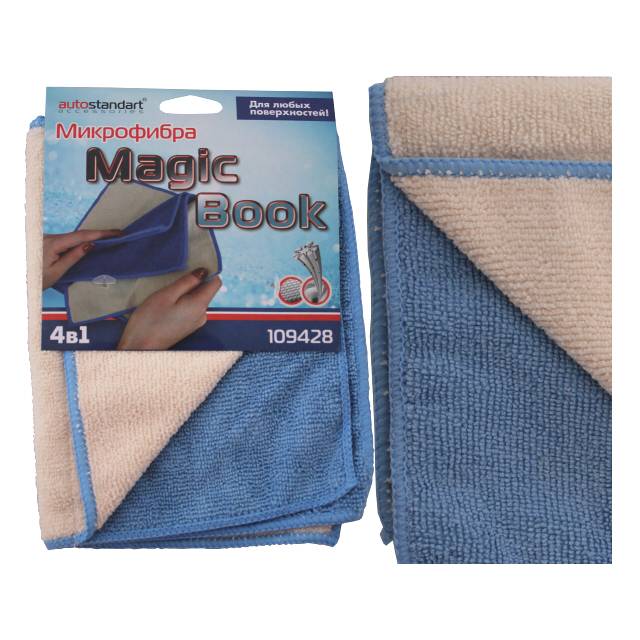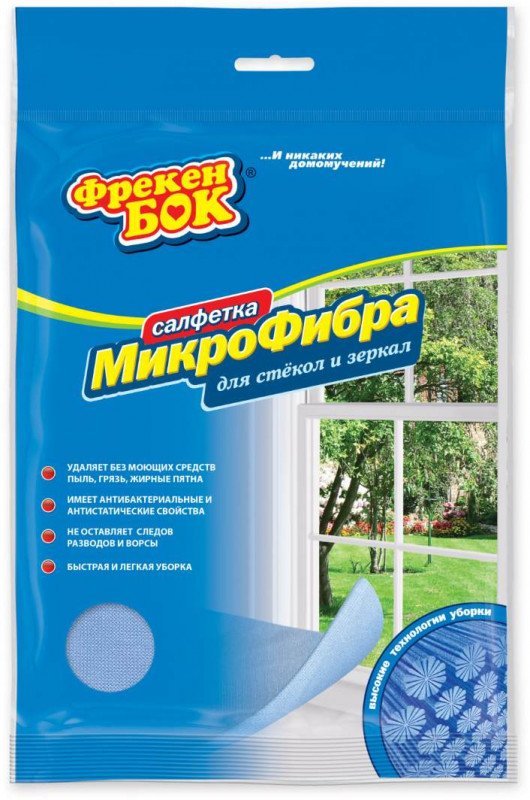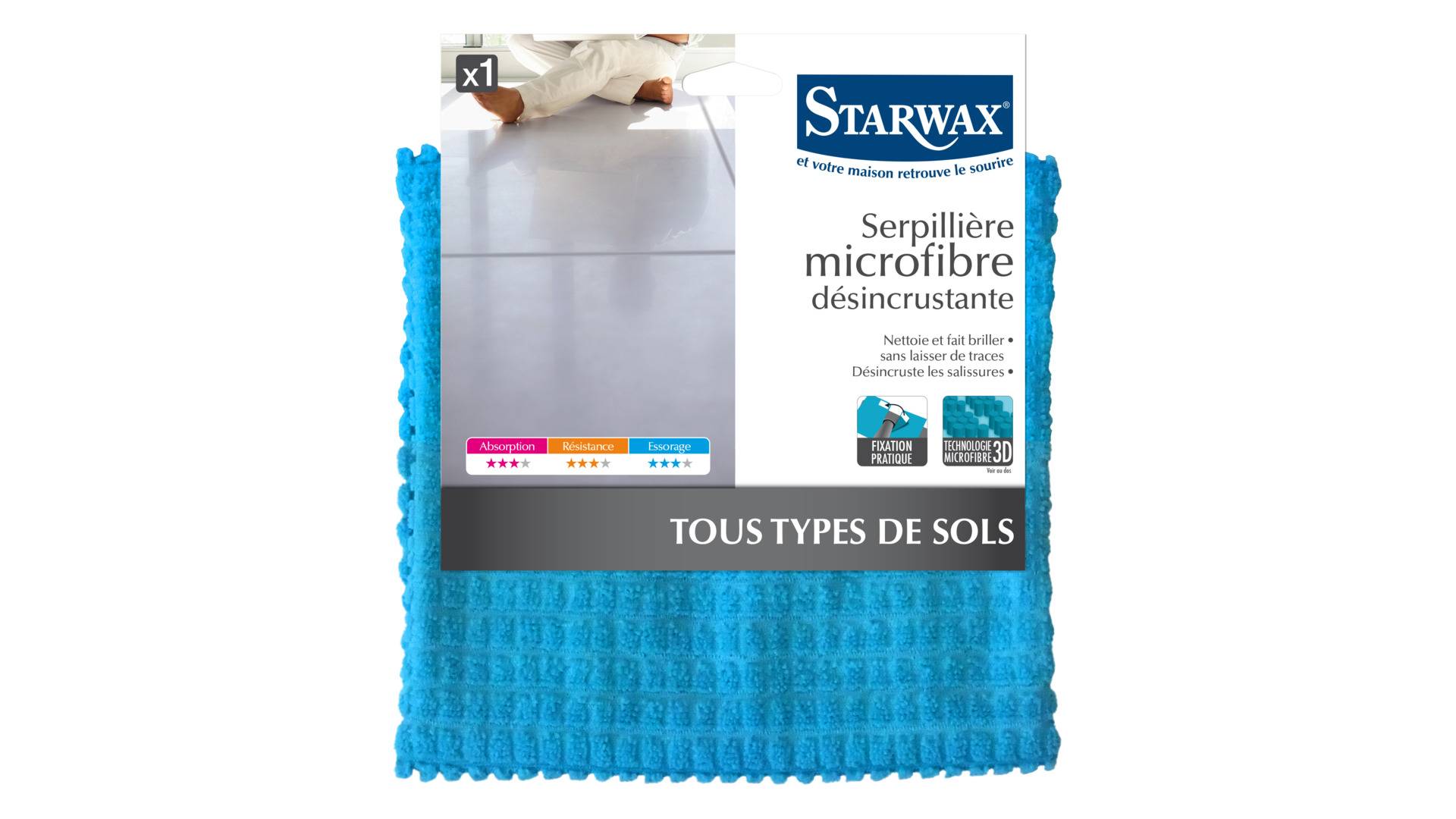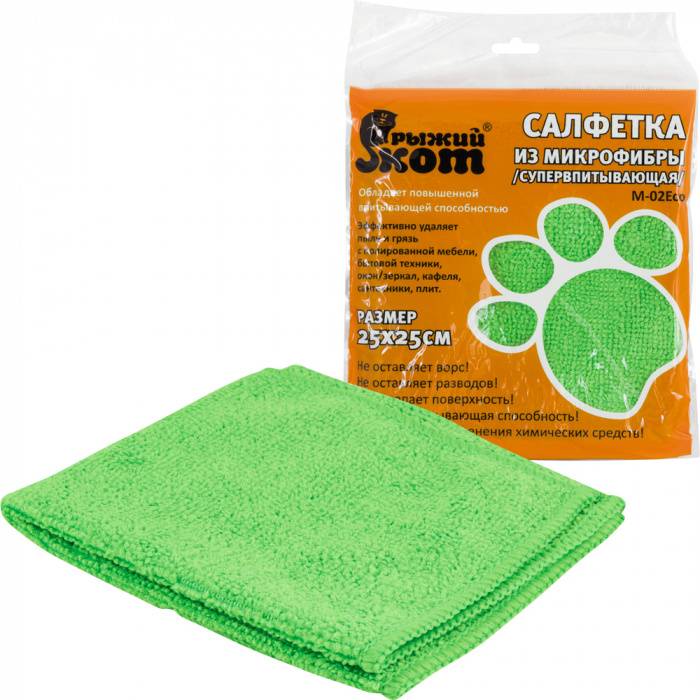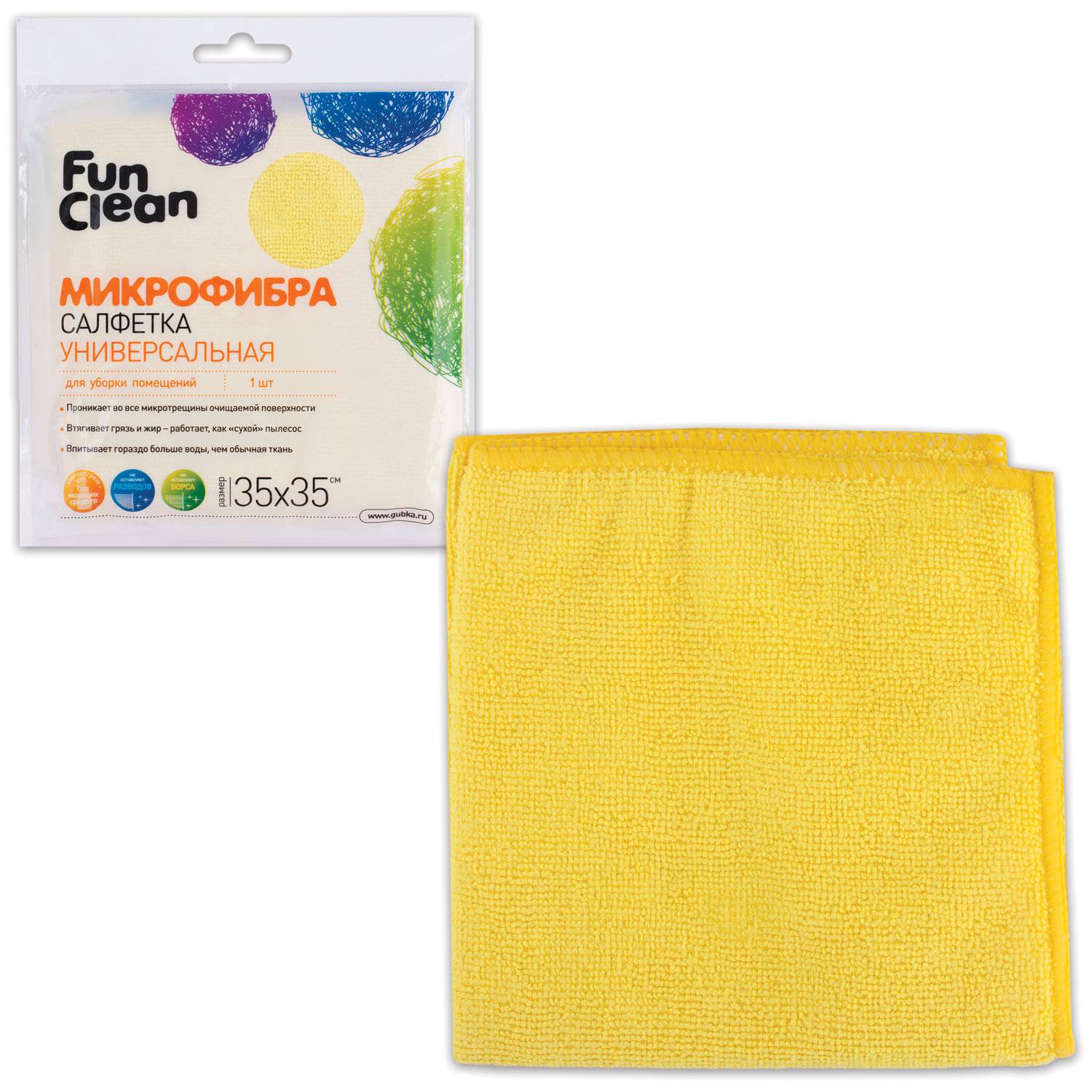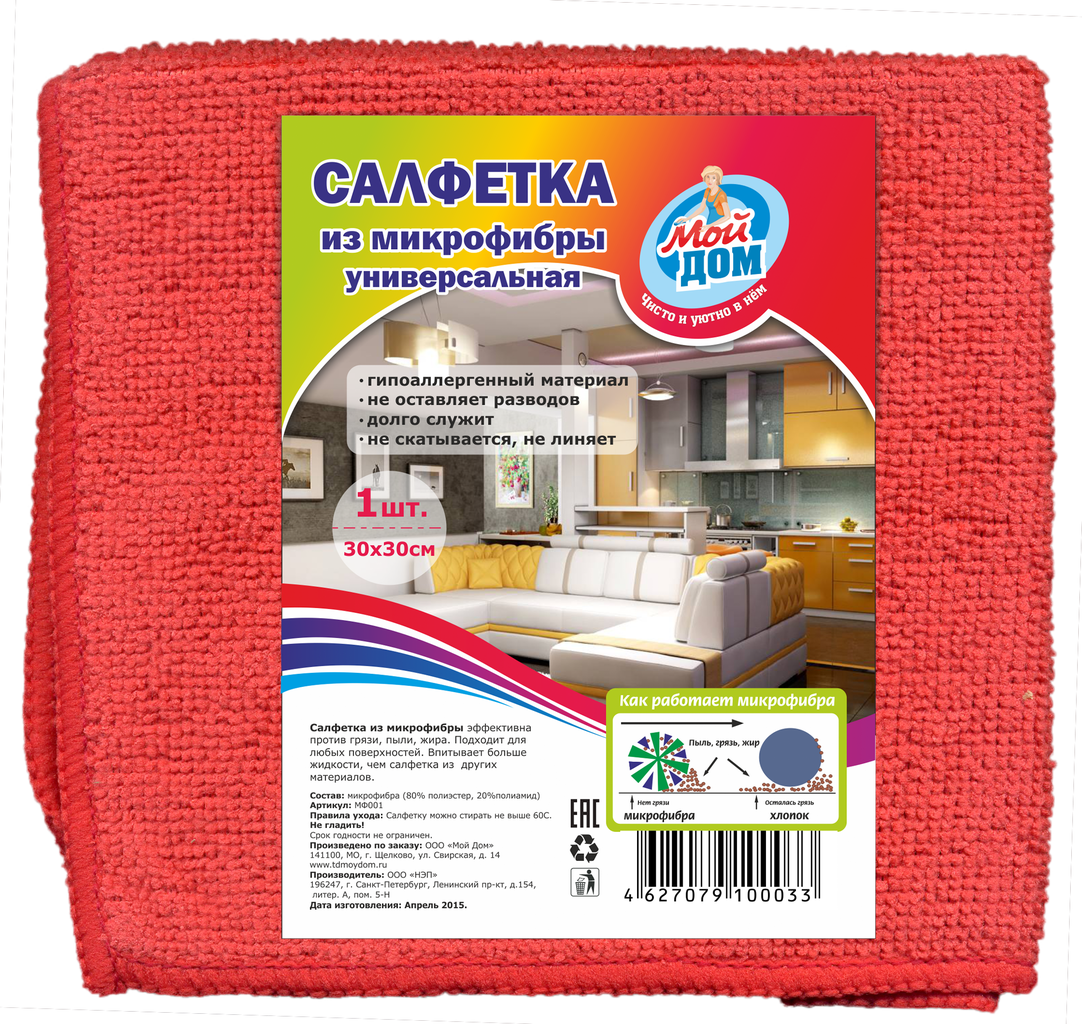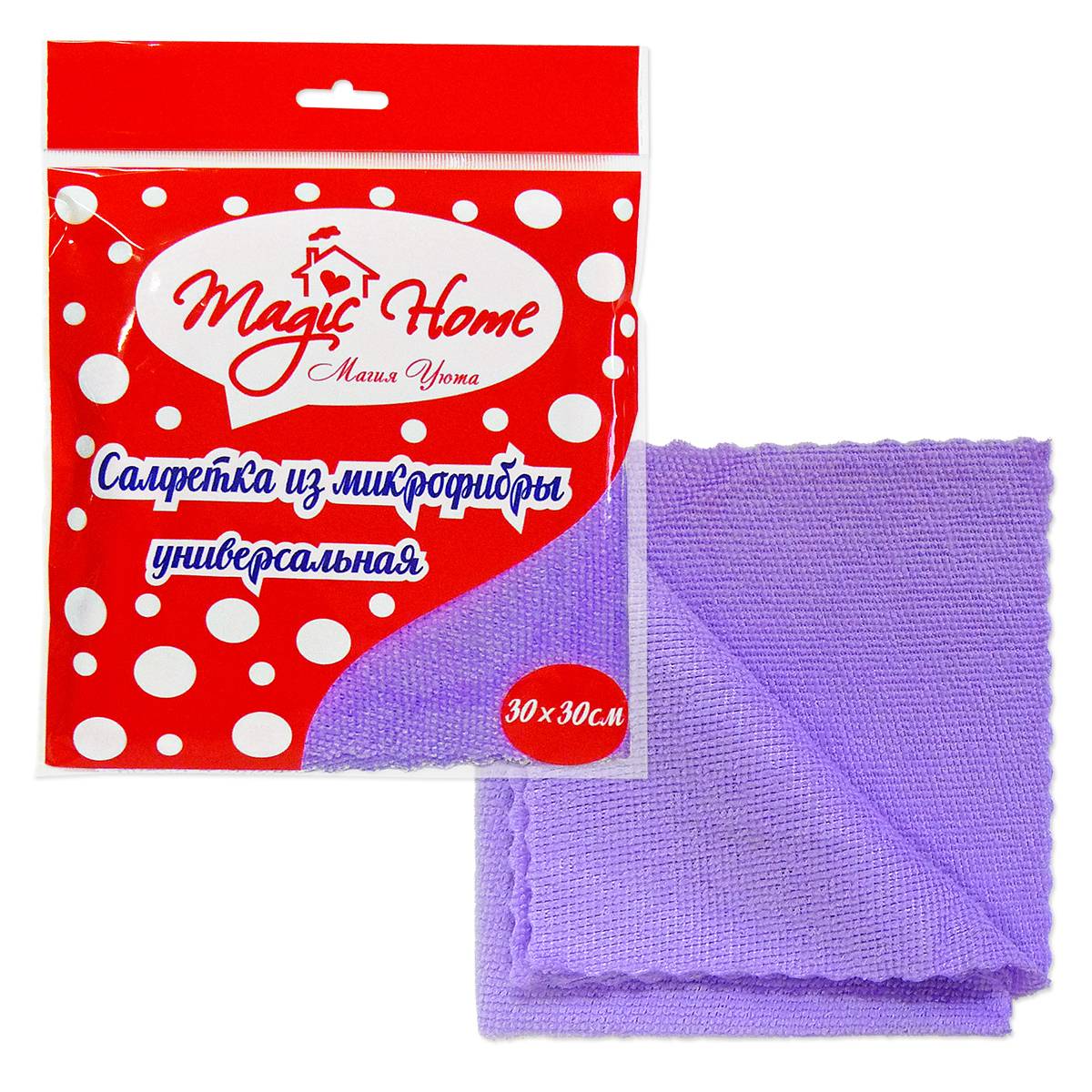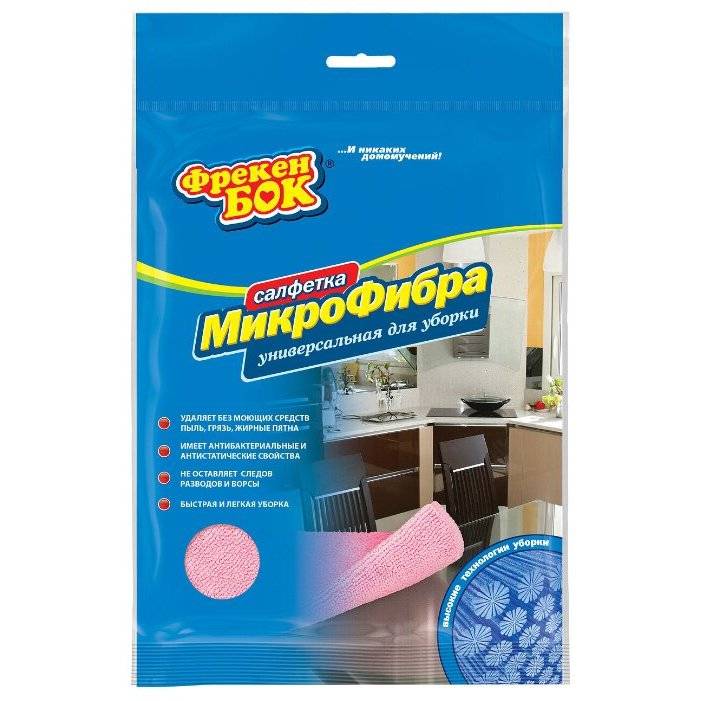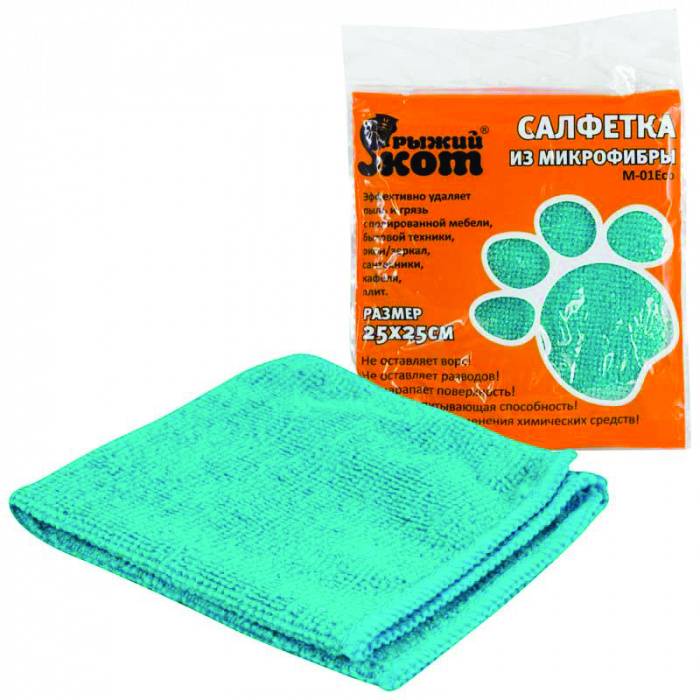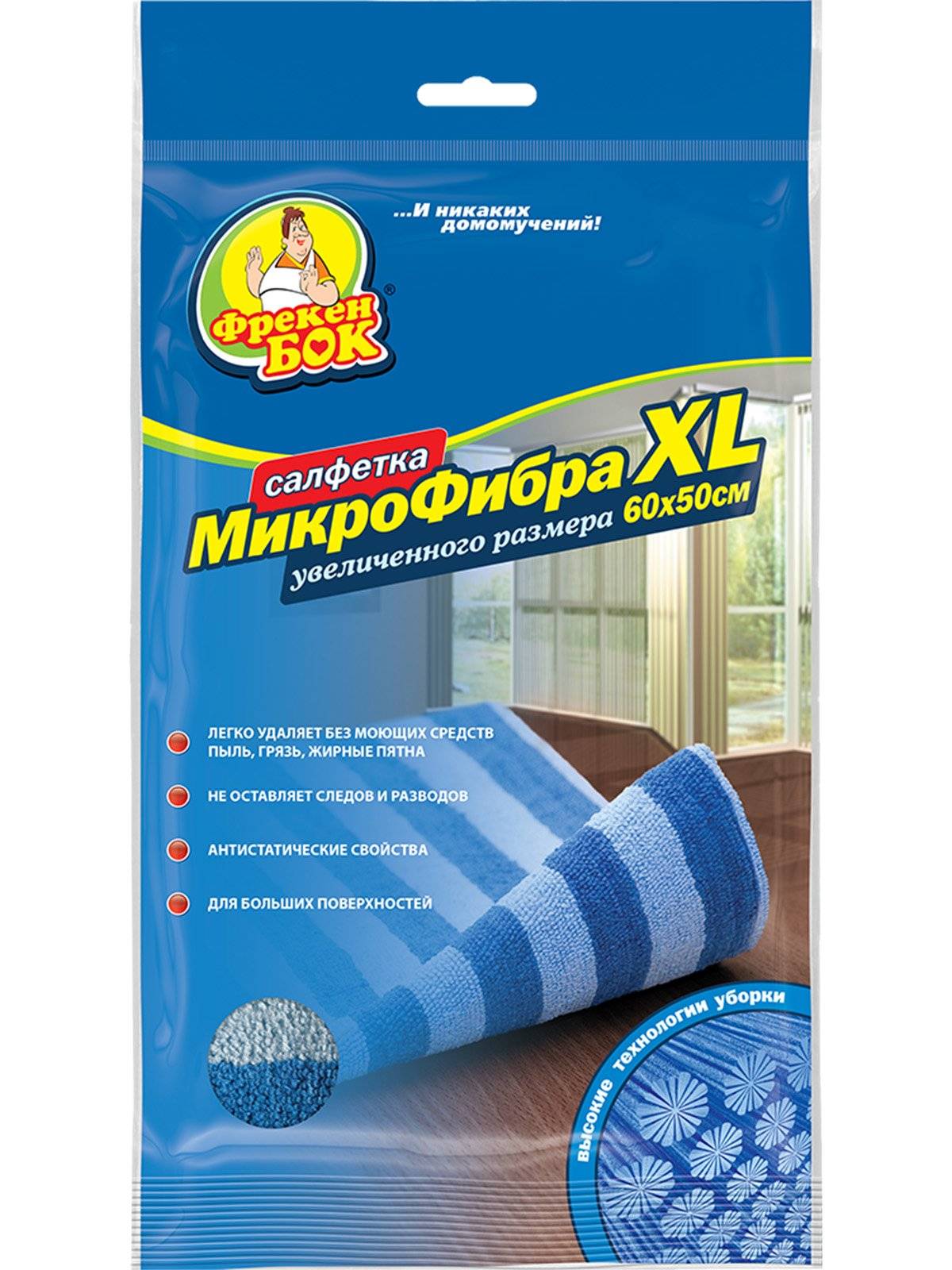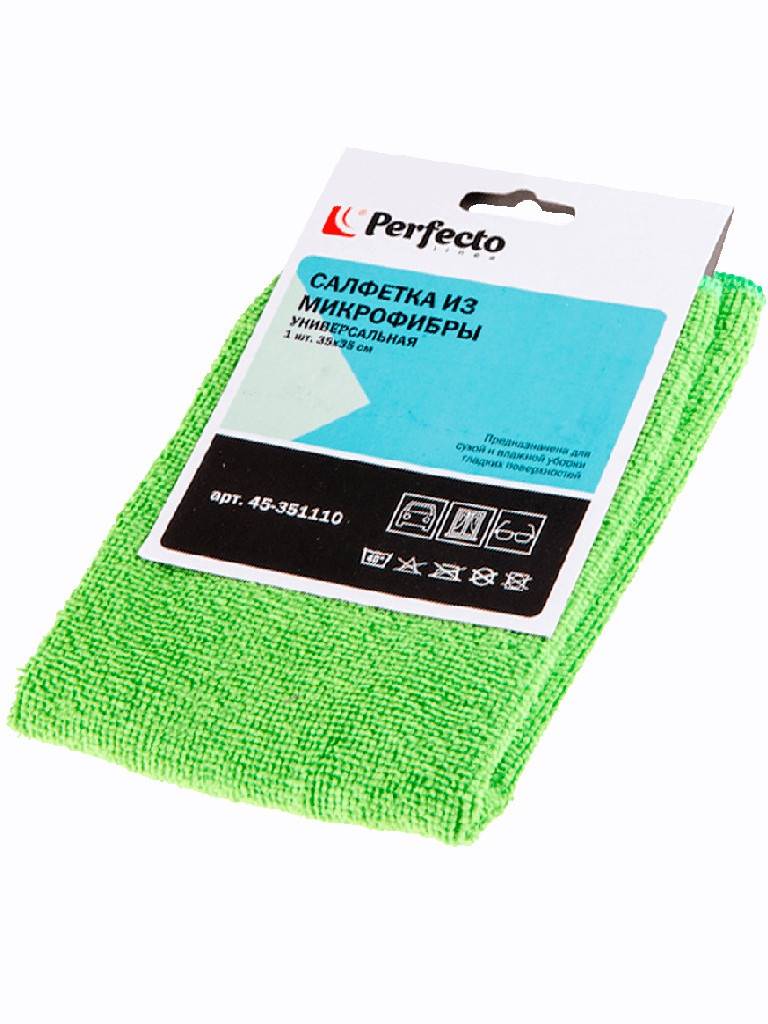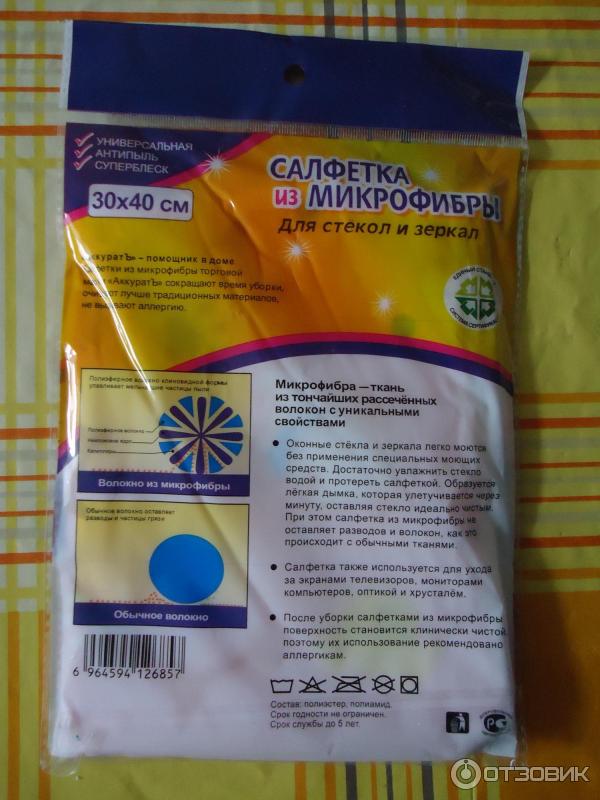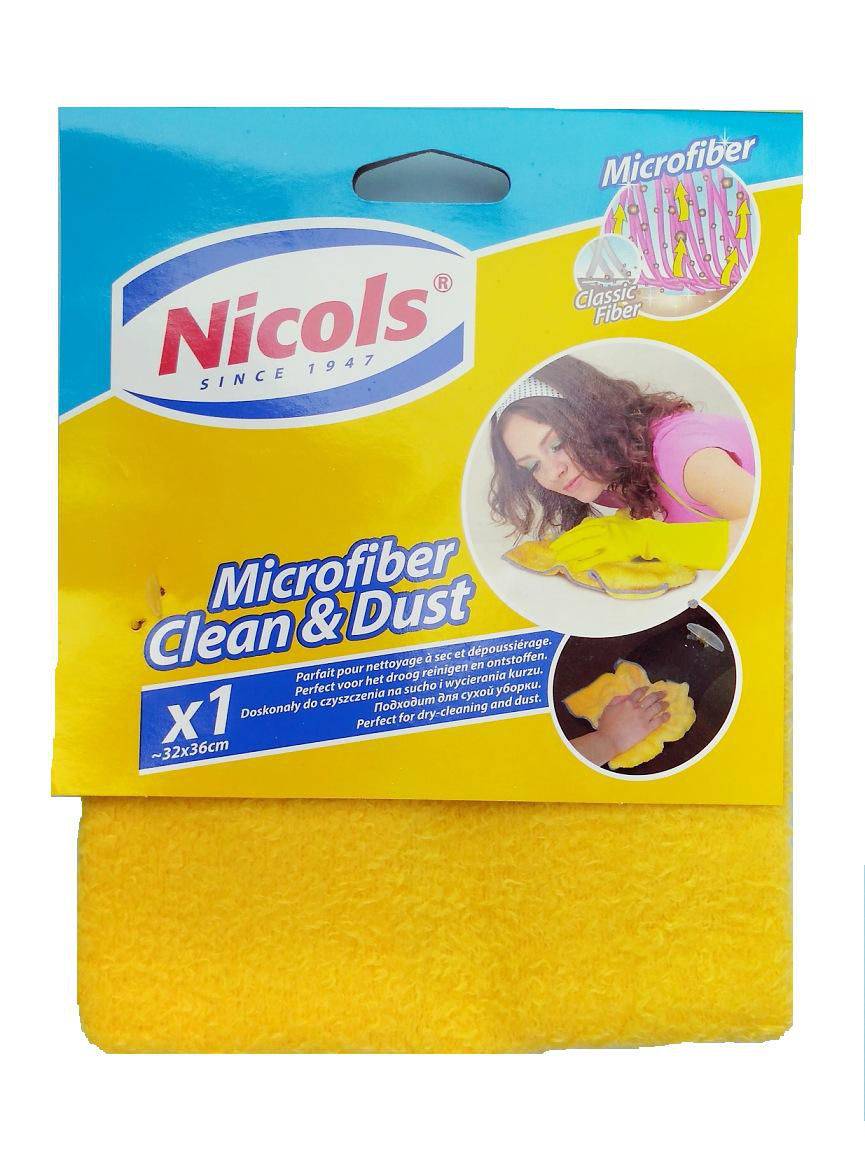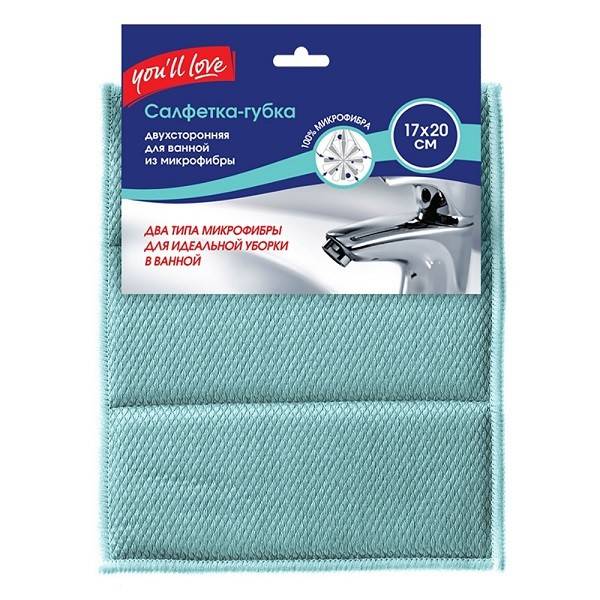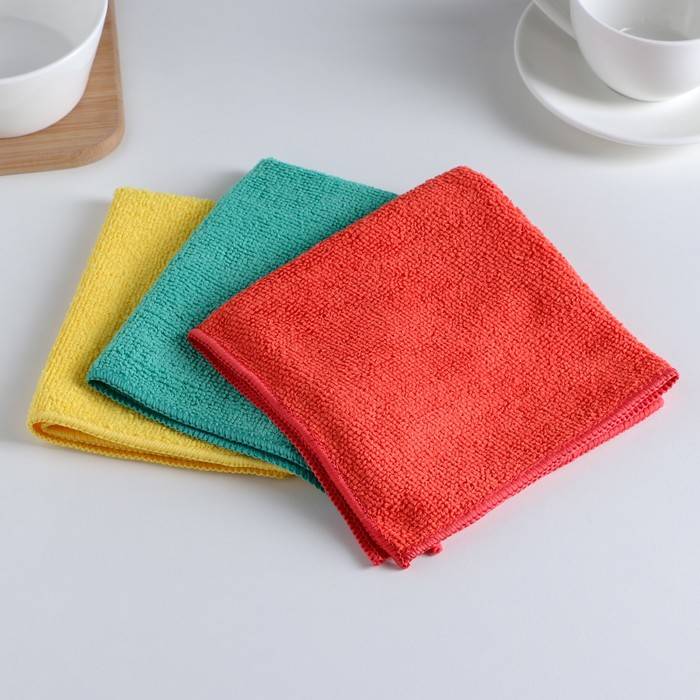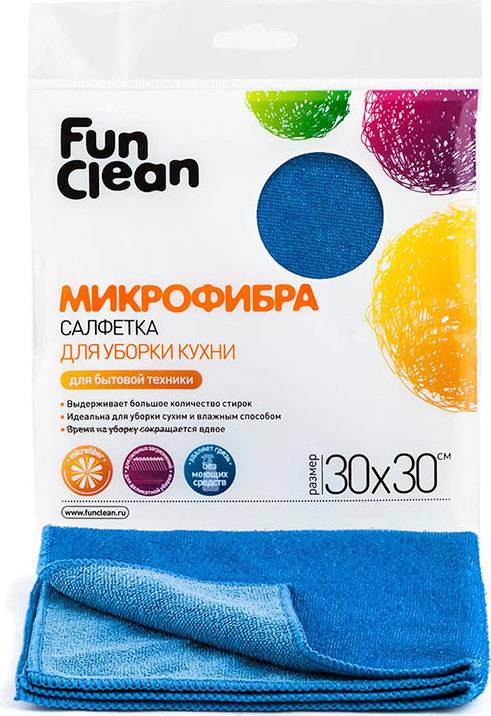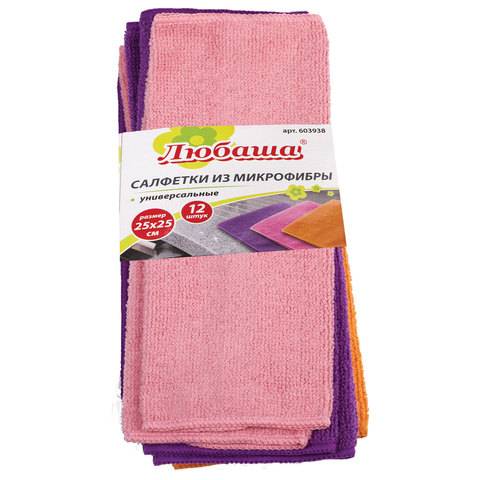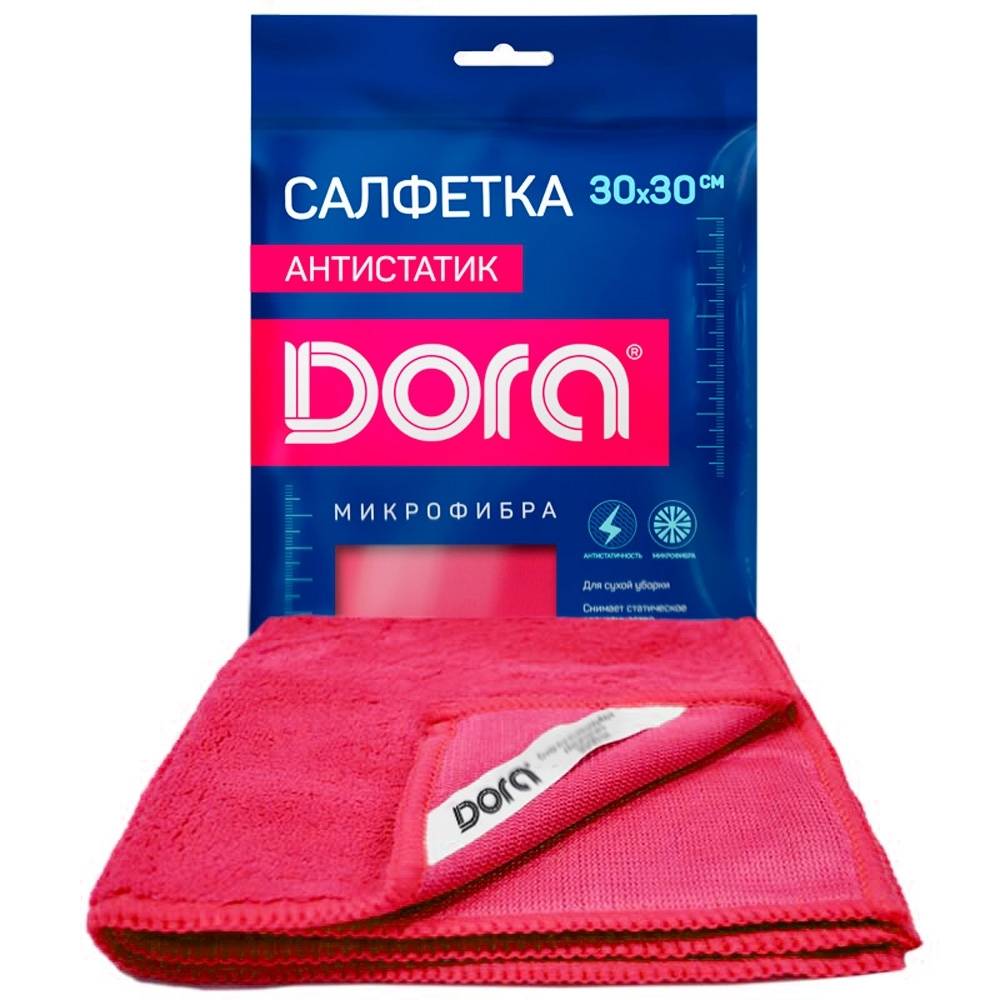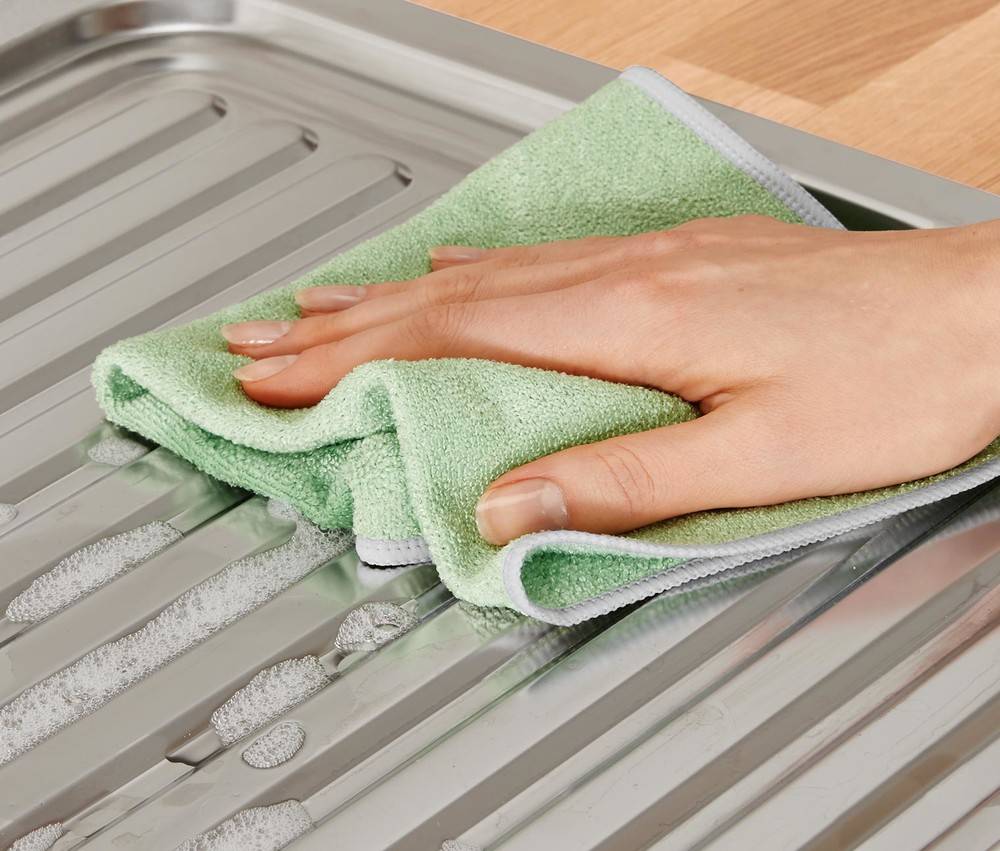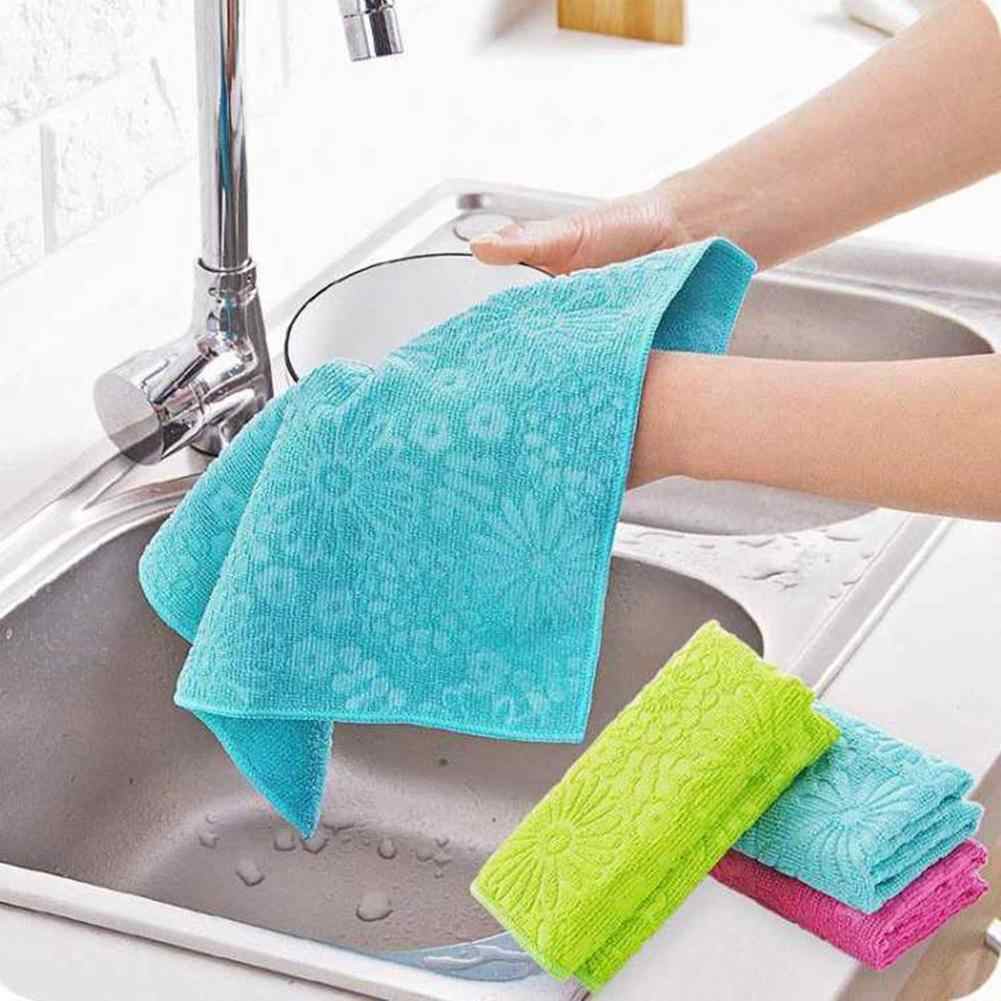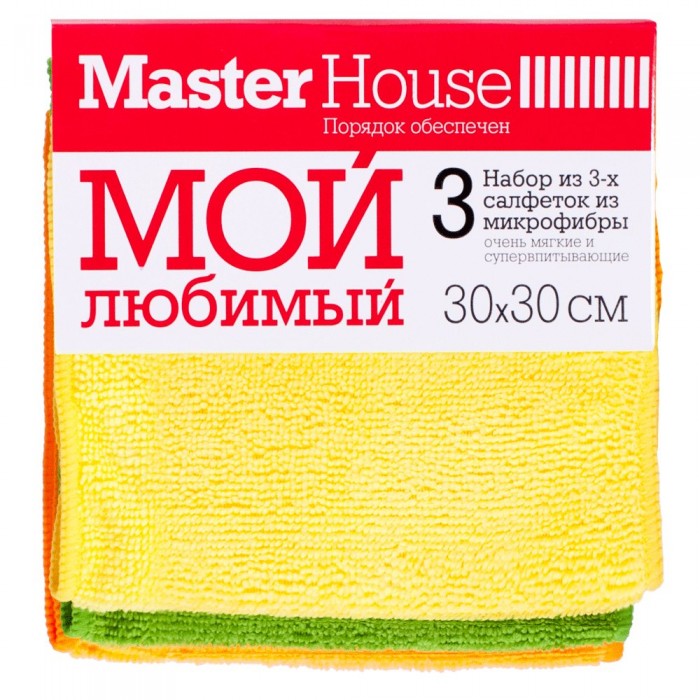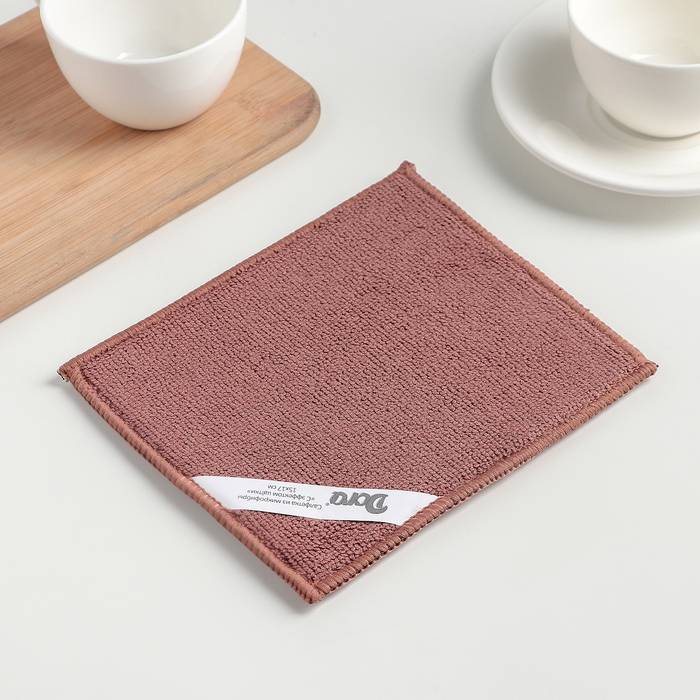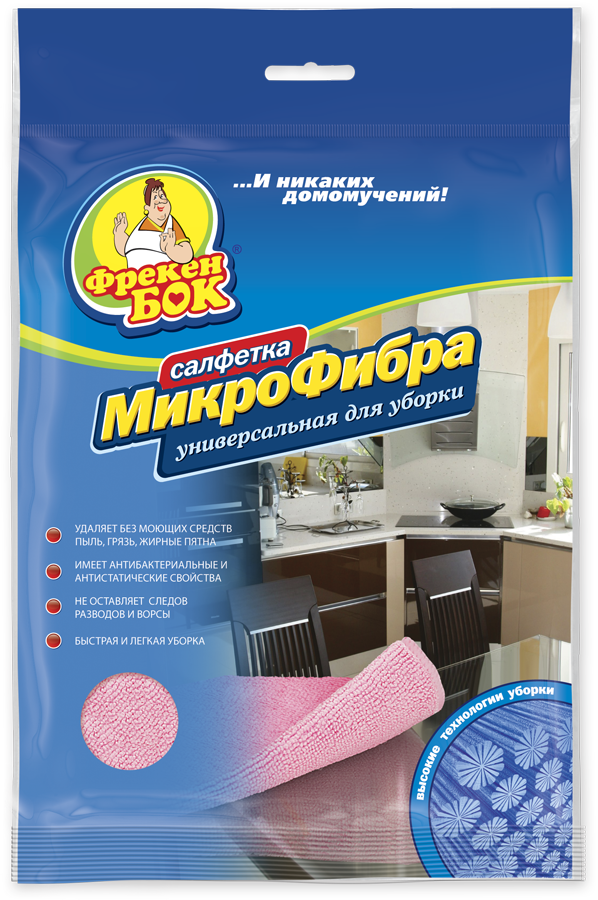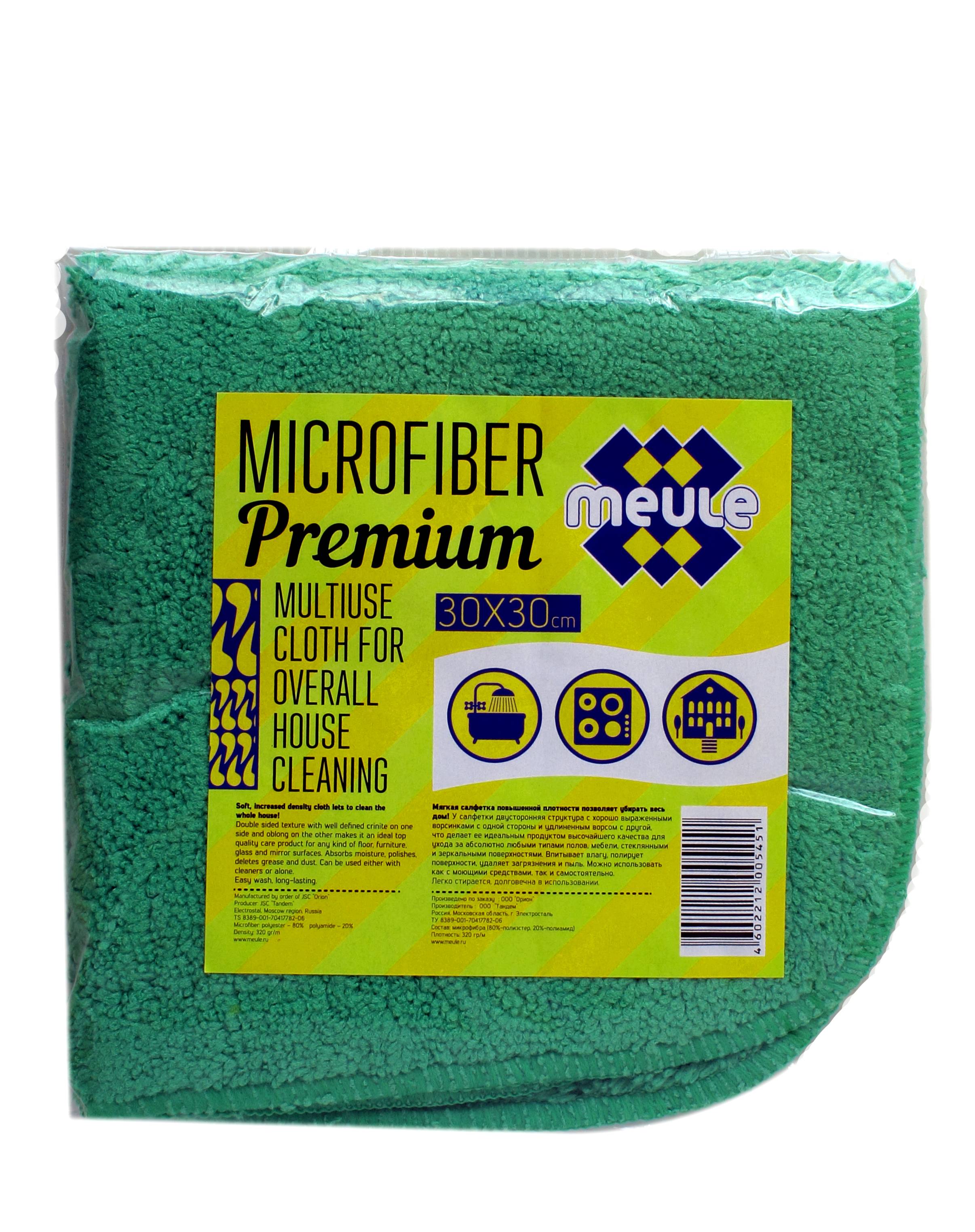What is microfiber
Synthetic material composed of two interwoven microfibers, polyester and polyamide, with split hook ends. In all respects, this fabric is superior to cotton and viscose products.
 Synthetic product
Synthetic product
Professional cleaning companies use three types of cleaning rags:
- natural, made of cotton and linen;
- artificial viscose;
- synthetic, polyamide and polyester.
All varieties have different properties of softness, strength, wear resistance and elasticity, the ability to absorb water. Microscopic fibers, twisted in a special way, cope with cleaning all surfaces.
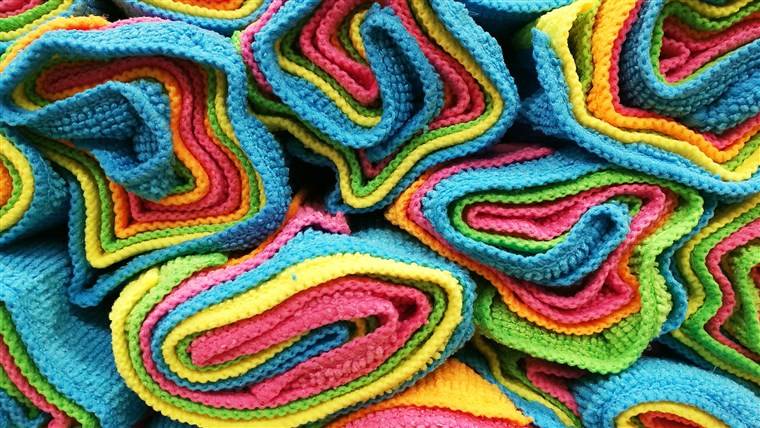 Microfiber
Microfiber
The market of the economic group offers napkins and rags for cleaning, pet care, optics and computer equipment, car and kitchen washing.
The popularity of the material is achieved thanks to:
- Penetrating effect when cleansing microcracks and pores.
- The ability to absorb dust, water and dirt through the internal space between the fibers, giving the surface antistatic properties.
- Capillary effect of suction of the smallest droplets of moisture.
- The ability to remove grease without additional surface treatment.
- Safe cleaning of delicate surfaces.
- Retention of qualities after numerous washes and intensive use due to durability.
- Ability to remove bacteria by capillary action.
- Use when cleaning cleaning and detergents in a minimum amount as unnecessary.
 Universal cleaning agent
Universal cleaning agent
Drying and ironing rules
It is recommended to keep microfiber away from hot appliances, radiators. Otherwise, bends and creases appear on the fabric that cannot be removed. In extreme cases, a hairdryer is allowed at a minimum temperature.
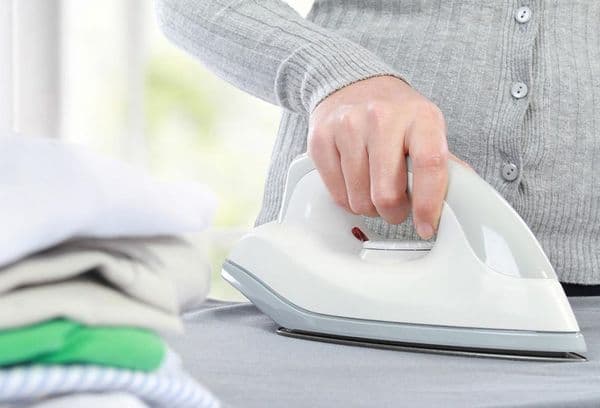
The synthetic fiber perfectly tolerates direct sunlight and dries in a few hours due to its porous structure.
How to iron products? Since the material practically does not wrinkle, it does not need to be ironed. Conversely, heating microfiber spoils the fibers. If the garment is too wrinkled, gently flatten it and dry it wet on a flat surface.
If the bed linen is made from the material and you want to give it the perfect look, you can try ironing it through a cotton napkin.
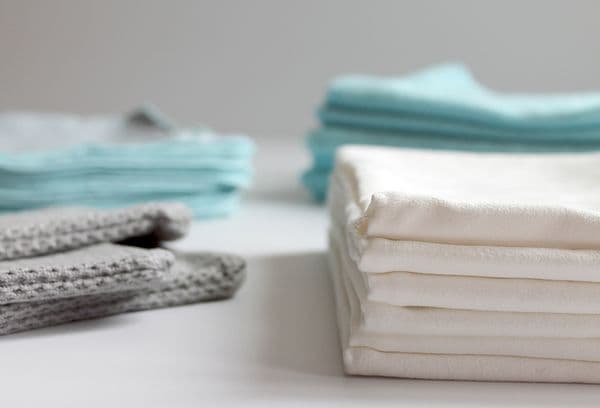
A few recommendations:
- Wash microfiber in an automatic machine only as a last resort, the products are well cleaned by hand.
- Rags and towels will last longer if you soap and rinse them daily.
- To remove stains on microfiber furniture, wipe it with soapy water in a circular motion, leave to dry and additionally brush it.
Microfiber is a versatile durable material, and proper washing only increases its service life.
The main varieties by material
Materials of cleaning napkins differ in the composition of the raw materials. Napkins are made from cellulose, microfiber, viscose, bamboo.
Cellulose
Natural raw materials from which the napkins are made meet the quality and environmental safety requirements. The hygroscopic material is 70% cellulose and 30% cotton. Cellulose fibers have the ability to swell when exposed to water. Cotton threads add elasticity to the napkin.
The peculiarity of the use of the material - preliminary moistening is required. A lightly dampened product easily absorbs and retains a large amount of moisture. Used to remove dust and dirt. At the end of cleaning, it is enough to rinse the napkin in soapy water. Drying, the material hardens, which prevents fungi and bacteria from multiplying. When dry, it should not be deformed.
Microfiber
The material contains polyester and polyamide.
Microfiber napkins are available in 2 versions:
- Woven. Synthetic yarns have the same weave as cotton. Napkins resemble pieces of cloth, absorb water well, leaving no residue after drying. Recommended for wiping matte surfaces.
- Non-woven. Synthetic material obtained by processing fibers under pressure. It absorbs moisture well, has polishing properties. Allows you to remove grease marks without the use of cleaning agents.
The nonwoven material has a denser structure, there is no hairiness at all. Microfiber is used for dry cleaning and wet cleaning. Cloth products are effective for removing dust without wetting. Non-woven microfiber is more suitable for wet cleaning.
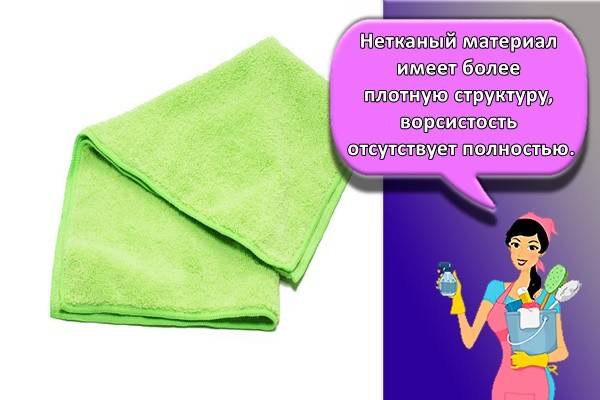
Universal napkins can be washed at 60-95 degrees in the washing machine or by hand with powder. Cannot be dried on a radiator or ironed.
Viscose
A viscose cloth is a modified version of a cellulosic cleaning product. Artificial fibers are obtained from natural raw materials (cellulose) as a result of chemical processing. The material can be used for dry and wet cleaning. Dry cloth in contact with plastic does not electrify the surface.
For wet cleaning, the napkin must be rinsed in water without detergents. Drying - with natural air circulation. The service life is limited compared to other types of materials. The advantage is low cost.
Viscose fabric is used in latex wipes. The cleaner resembles a three-layer sandwich: latex-viscose-latex. This fabric is more durable than pure rayon. Use wipes only for wet cleaning. Advantage - high-quality cleaning of any surfaces without streaks. Does not remove fingerprints on glass.
Bamboo
Bamboo linen is a natural material without chemical impurities and additives, with a porous-tubular structure.
The advantages of bamboo products are due to the structural features of the fiber:
- They remove fat deposits well and are easily degreased with hot water during washing. The products can be used for washing dishes without detergents.
- They are hygroscopic.
- Do not leave streaks.
- They do not lend themselves to microbial contamination.
- The service life is unlimited.
- The number of wash cycles - 500 times (with machine wash - without conditioner; do not dry on a battery, do not iron).
- Environmentally friendly, non-allergenic.
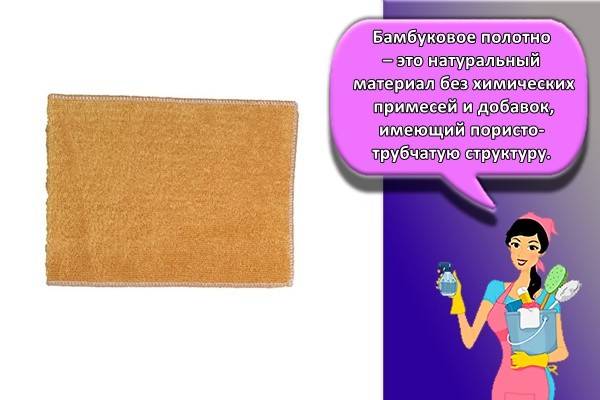
Bamboo wipes are suitable for dry and wet cleaning in an apartment / house.
Rules for choosing household napkins
The material for cleaning dust and dirt is selected depending on the type of surface, the degree of pollution.
This takes into account:
- matte or glossy surface;
- are there fingerprints;
- mud and fat deposits or their traces;
- the ability to use wet cleaning.
For household needs, napkins from different materials are required at the same time.
Floor
The floor is the most polluted surface in the premises. Food traces, dust, lime deposits are removed from the floor. The cleaning method is always wet. As a toolkit, the best cleaning products are viscose and microfiber wipes. The material can be rinsed repeatedly during cleaning to remove all dirt from the floor without leaving streaks.
Furniture
Furniture made of wood, chipboard, laminated chipboard are wiped from dust without detergents. Plastic kitchen sets can be washed using pastes, gels, dishwashing detergents. Microfiber is used for dry cleaning of matt and polished surfaces.
Plastic furniture is washed with latex, cellulose, bamboo napkins.
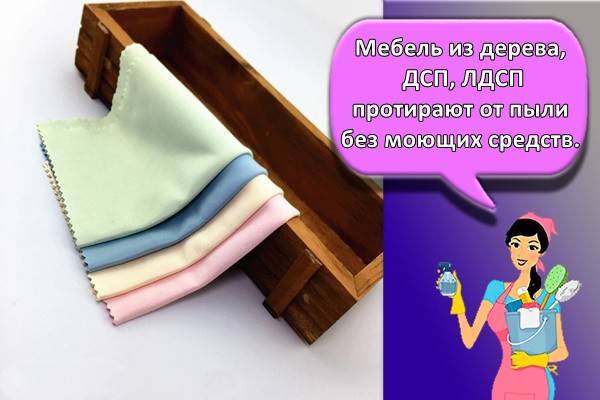
Tile
Water, soap, oil splashes settle on the tile. Dust accumulates in the seams. Cellulose, latex, bamboo fabrics will remove plaque from surfaces and seams without damaging the surface.
Technique
It is more convenient to wipe the microwave oven, refrigerator, washing machine with a damp microfiber cloth. It is better to clean the TV, computer / laptop from dust with a viscose cleaner.
Glass and mirrors
Glass and mirrors can be as clean and streak-free as possible by using non-woven microfiber products.
If the product is heavily soiled
In this case, prolonged soaking for 10-12 hours is applied. Dissolve the detergent in water and immerse things in it, then rinse thoroughly. If it was not possible to wash the towel the first time, it is re-soaped and rinsed.
To tidy up a kitchen rag, you can pre-treat it with a paste of soda and water and immerse it in a soapy solution for an hour, then rinse it thoroughly in water.
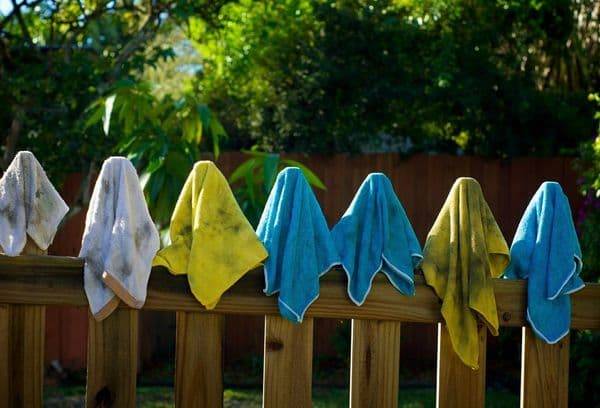
Another way that housewives are familiar with is using lemon juice as a stain remover. The recipe is as follows: juice from half of the fruit is squeezed into a basin with 5-7 liters of warm water and the cloth is immersed for a couple of hours. If the dirt is deeply absorbed into the fibers, it is allowed to squeeze out a whole lemon, then wash in the usual way.
To remove stains, you can use "Vanish", which treats fabrics delicately. The drug should be diluted according to the instructions, usually the contaminated napkin is kept in the solution for half an hour.
Viscose and cellulose
Any kitchen work is accompanied by contact with water. Often liquids spill, a rayon or cellulose napkin will help to collect them quickly and efficiently.
These household items are made from cellulose and cotton fibers. Used only when wet. A dry cloth cannot be twisted and wrung out, it is easily destroyed.
It is used for collecting liquids, as well as wet cleaning of any type. Gently removes dust from facades and countertops without damaging them.
Wash them off by lightly rinsing them in soapy water. Rubbing such a rag too hard is not worth it. Drying, it becomes hard, so that bacteria and fungi do not multiply in its thickness.
Types and features of cleaning rags
 Types of rags
Types of rags
Today on the sales market there are 5 main types of high-quality cleaning equipment. Each of the presented types is designed for a specific surface. Proper use and storage of the cleaning "tool" will keep your home clean and last longer.
So, what are modern rags made of and how to use them correctly?
Latex
Latex is widely used in all kinds of industries, and it has taken its own niche in the cleaning equipment industry. Latex wipes are made from synthetic material. They consist of a viscose layer and two rubberized layers. Due to its structure and high coefficient of friction, the miracle cloth retains liquid well, thus providing effective cleaning even for stubborn stains. Ideal for cleaning glass surfaces, kitchen countertops, tiles and sanitary ware.
Microfiber
Microfiber is made from two polymer threads - polyamide and polyester. Napkins are divided into two types: non-woven and woven. Incredibly fine fibers are excellent for cleaning all surfaces. Microfiber rags, unlike cotton ones, remove dust efficiently and retain it, allowing people with allergies not to worry about exacerbation. Also microfibers perfectly absorb moisture and make it possible to clean without the use of special products.
Viscose
Due to their hygroscopicity, viscose rags are very popular in cleaning companies. Pleasant to the touch and versatile, they are used in any wet cleaning, both with the use of chemicals and without them.
The moisture absorption of a cloth depends on its composition, the more cellulose it contains, the better the moisture retains.
Bamboo
The main advantage of bamboo napkins is an environmentally friendly material.The canvases are created without the addition of synthetic materials, and are safe for people with allergies. Bamboo rags, thanks to their antibacterial effect, remove not only grease and dirt from surfaces, but also harmful bacteria. They do not leave lint and streaks, they are suitable for any type of cleaning.
Wet rags
Wet wipes are gaining popularity. They are made of non-woven fabric, multifunctional, have an antibacterial effect. Thanks to a special solution, the rags remove up to 99% of bacteria and destroy fungi. Designed for disinfection of bathrooms, toilets, plumbing, tiles. Some types of wet wipes are aimed at combating dust and stains, and are suitable for the care of wooden furniture and household appliances.
Methods of obtaining
The worldwide popularity of the material developed at the end of the 20th century came in the 80s and later. The fabric was invented in 1976 according to the previously found formula for twisting ultrafine fibers with a thickness of 0.06 micrometers. The hot action of alkali when dissolved on polyester yarns results in a loss of the original fiber weight.
On a note! In the created matter, each thread consists of intertwined microscopic fibers from 50 to 150 pieces. Two manufacturing methods are used - direct and connected extrusion.
- The first method does not provide for the production of ultrafine fibers, but is aimed at the formation of uniform synthetic threads. The finished fibers are intertwined.
- The second type of extrusion connects the constituent components as they pass through the star-shaped hole and then dissolve the fibers. The initial combination of two types of components.
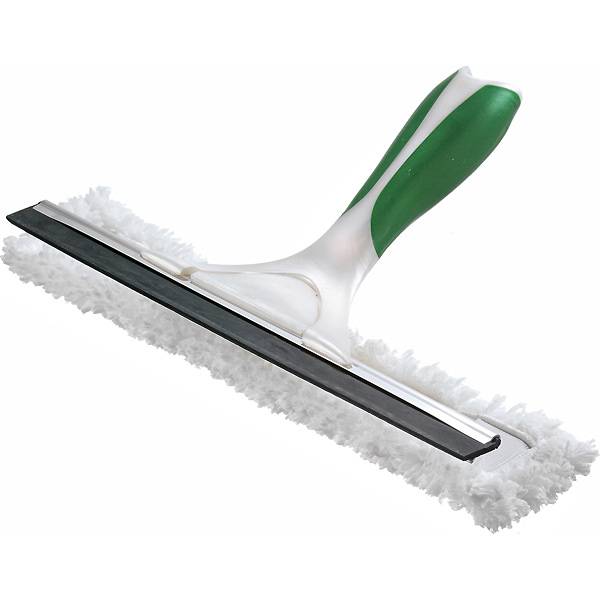 Technological device for washing the floor
Technological device for washing the floor
According to the components included in the manufacturing process, the products are divided into beech cellulose fabrics (for the production of bed linen and clothing), polyamide (knitwear and underwear).
On a note! It is used in the manufacture of clothing for polar explorers, athletes, sports balls and shoes, medical supplies.
What is this fabric and what is she afraid of
Microfiber is woven from the finest fiber - polyester, polyamide or nylon. It is used to produce bedding, towels, cleaning equipment, furniture, eyeglass napkins and car seats.
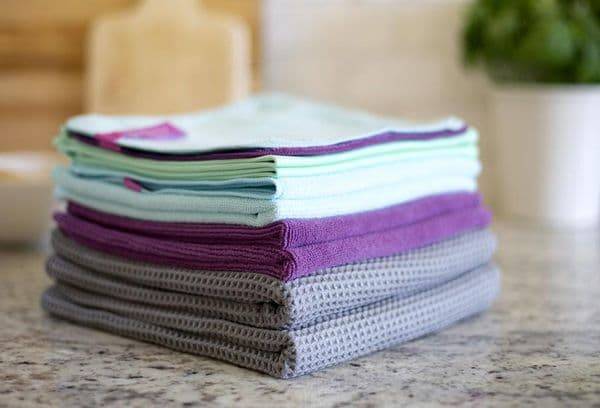
Synthetics do not tolerate hot water, ironing, bleaching and aggressive detergents. It is also not recommended to twist it strongly during spinning, although the material is resistant to deformation. The fabric does not like the effect of the linen conditioner, because of it, it loses its unique properties.
Manufacturers usually indicate on the label how to care for the fabric, whether it can be washed in an automatic machine, or it is recommended to get rid of dirt by hand. There is also information about the temperature regime.
Washing rules for bulky microfiber items
An increasing number of residents are striving to diversify their wardrobe with high-quality and comfortable models made of heavy-duty and soft-touch material. But how to wash a microfiber jacket to keep its original appearance without deforming the structure of the fabric. It is recommended to use a spacious container where the wardrobe item could be conveniently positioned if the decision was made manually. When loading a bulky product into a drum, it is better to wash it without adding other items to the washing machine.
Those inexperienced in caring for the newfangled fabric are puzzled how to wash a microfiber blanket to keep the fibers soft. It is considered a gross mistake to use conditioner, which is contraindicated with such a texture. If the conditioner was added by mistake, then you will have to rinse the garments thoroughly after washing in several waters.
Pros and cons of the material
Microfiber is a microfiber that has a complex structure. In composition, it is a mixture of synthetic materials. Usually it is polyester, polyamide and others. This fiber has tiny pores.When friction occurs on the surface, an electrostatic effect occurs in the towel, due to this, moisture is absorbed into the micropores. Unlike natural fibers, microfiber has a number of advantages over towels. Here are just a few of them:
- Can absorb moisture up to 8 times its own weight. Compared to cotton or linen, they are smaller and lighter in weight. For comparison, the weight of a product made of this material with dimensions of 30x60 weighs only 37 grams. And its terry counterpart is up to 200 grams. Here the difference is more than 5 times. This data is provided in dry form, but if you wet the terry towel, it will weigh even more.
- The material is very soft, pleasant to the body. They can dry themselves without discomfort even when the towel is wet. If necessary, it can be squeezed almost dry.
- These towels have a high drying rate. In the sun or light wind, they become completely dry in a maximum of 20 minutes.
Towels are additionally treated with antibacterial compounds. This prevents odors for the entire life of the product. Bacteria do not grow in the tissue, therefore this microfiber is hypoallergenic. Such wipes not only prevent the growth of bacteria inside, but also collect them from the surface like a sponge. Therefore, the room after cleaning will not only become cleaner, but also much safer.
Other benefits of microfiber:
- High wear resistance. Towels do not lose color for a long time, retain their shape. Even with intensive use, it will last at least 3 months. High quality towels withstand up to 300 washes. Less expensive up to 200, and the cheapest up to 90.
- They are very compact and will not take up much space in the bag. Even a large towel measuring 170x90 when folded will be no more than a fist. For this reason, they are widely used for travel and training.
- Microfiber towels are versatile and come in a wide variety of sizes and colors. There are small ones, for example, 40x40 cm are intended for hands. Large sizes - 170x90 cm are used for baths. Usually they are equipped with protective covers with a clasp.
Lint microfiber towels absorb more moisture than smooth ones. Outwardly, they resemble ordinary terry. Their advantages are that they are stronger, usually carried out in large sizes. They will become indispensable in hiking and outdoor recreation.
These towels can be put in the bag while still wet. They will dry on their own in their mesh pouch. There is also a loop on the case. It is convenient because it can be fastened to a belt, a backpack, or, for example, in a forest with a loop, to hang it on a tree.
Apart from all the positive qualities, microfiber products have several disadvantages. They must not be dried near an open fire. It melts under the influence of high temperatures. Unlike a terry towel, such a towel does not warm. On the beach, you will not be able to wrap yourself in it to protect yourself from the cool wind.
Too dirty towels stop absorbing moisture from the surface. Usually, napkins used in the kitchen or for washing cars are clogged with grease and dirt. The fat clogs the pores, thus blocking the supply of air and moisture. There are two options for solving the problem: replace or wash thoroughly.

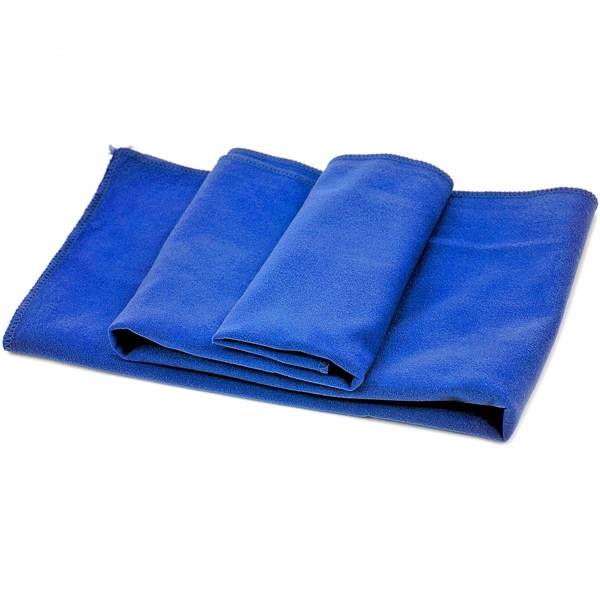
Material advantages
Microfiber has excellent absorbency and cleansing properties. When dry, it forms an electrostatic voltage that attracts dust particles. The fibers of the canvas penetrate into the smallest pores of the surface to be cleaned. Cleaning takes place without traces, lint residues. Effectiveness is observed even in the absence of detergents.
The synthetic fabric is characterized by hypoallergenic and antibacterial properties. This feature allows you to use the inventory in the children's room.
Universal fabric is used for all types of surfaces: glass, furniture, floors, tiles, household appliances.It copes well with traces of dirt and grease. Even with strong friction, the material does not scratch. The fabric of the fabric, regardless of density, remains breathable thanks to the system of gaps.
How to machine wash microfiber
You can wash microfiber in the washing machine. If you choose the right detergent and mode, the item can withstand up to 500 washes. Simple guidelines will help you understand how to wash microfiber in the machine correctly:
- things made from this fabric are usually voluminous, so you should not load the car too much, it should be a quarter empty;
- it is best to set the temperature to 30-400;
- it is advisable to choose a delicate mode without spinning;
- it is not recommended to load things that can shed with microfiber, this fabric easily absorbs paint;
- it is advisable to wash such products in general separately, since all the fibers and hairs from other fabrics will collect on the surface of the microfiber;
- It is best to use a liquid detergent without bleach or fabric softener.
If the item is heavily soiled, do not increase the amount of detergent; it is better to pre-soak it for 10-12 hours in a detergent solution. You can also lather the stain with laundry soap, leave it on for an hour, and then machine wash.

How to care for microfiber products
Correct washing of microfiber products can extend the service life by several years.
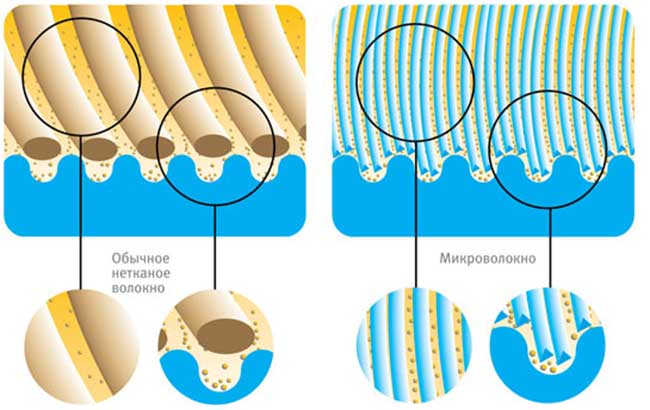 How the canvas works
How the canvas works
- Wipes should be washed at a temperature not exceeding 60 ° C without conditioners and bleaches. Chemistry can reduce the ability to absorb large amounts of moisture.
- For serious dirt, soak the fabric in a concentrated soap solution and then wash as usual.
- Drying on hot batteries or near other heating vents can damage the product.
- It is also not recommended to iron the product with a hot iron. Fibers are very susceptible to high temperatures and therefore can deform. This disadvantage was easily compensated by itself due to the non-creasing microfiber structure.
In reviews, negative emotions are more often associated with cheap synthetics, which unscrupulous manufacturers pass off as microfiber. The production technique is very expensive and therefore, often in order to save money, some people use low-quality raw materials. Fortunately, synthetics are easy to identify by their strong chemical odor, while real microfiber does not smell and, moreover, does not acquire a smell later.
For your information! Also, synthetics strongly fade and stain, and if the products are original, then this problem should not be, even if the rags are poisonous green or red. And finally, the resistance of microfiber to deformation and wear does not allow cheap raw materials to compete with themselves.
Types of microfiber napkins
There are two types of microfiber: woven fabric and non-woven fabric. For the production of cleaning wipes, non-woven fabrics are used, which differ in that they do not have interlacing of threads and consist of fibers.
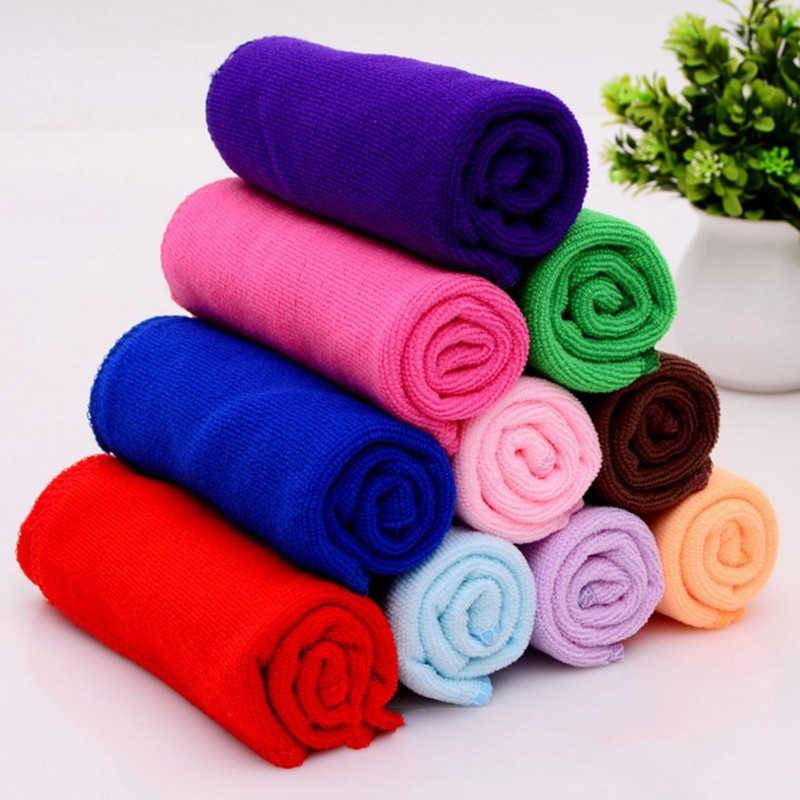 Types of cleaning wipes
Types of cleaning wipes
For your information! Manufacturers offer a whole range of cleaning products made from innovative materials, including household rags and napkins for caring for equipment, cars, polishing optics and other ultra-sensitive surfaces.
Based on the above, not all household napkins have the same characteristics. They come in different densities, structures and sizes. In accordance with them, the scope of their application is determined:
- Rag for the floor. This type of napkin is fluffy, suitable for both wet and dry cleaning, as it clings to dust, hair and wool well, which is especially important for pet owners. Does not leave streaks. When using detergents, it saves on household chemicals.Reviews of such napkins are extremely positive, since after using ordinary cotton floor rags, which wear out very quickly, microfiber becomes an excellent find for housewives and not only.
- Glass napkin. This type of glass care cloth is smooth and suitable for polishing glossy surfaces. It has a flat weave, due to which cleaning becomes much faster and easier.
- Universal napkin, it is also a "loop" cloth. It has a fleecy and smooth side, which makes it possible to clean any kind of surface. In addition, thanks to the protruding villi, the fabric penetrates into all microcracks and scratches that are present on any plane, and cleans out all the dirt.
- Optics napkins. These are those that have a very delicate structure that does not scratch the glass surface. In the reviews it is noted that it perfectly copes with traces of drops, dust and fingerprints on the lenses of cameras, screens, monitors and even laser discs (and in fact they seem to be scratched from everything). A cloth will also be an excellent helper to keep the phone screen clean, even when dry cleaned.
Wet wipes
Small nonwoven fabrics soaked in a special liquid and placed in a package with a valve have been appreciated for a long time. You can take them on a trip and clean your hands, even if there is no water nearby.
There are similar wipes for cleaning the house. But you should not use either one or the other for other purposes.
Wet cleaning rags are impregnated with a special liquid that helps to dissipate static electricity that literally attracts dust. They can be used to clean any surfaces and even screens of household appliances, unless otherwise indicated by the manufacturer.
Such items cannot be washed or reused. But this is not required, a large pack of napkins will last for a long time.
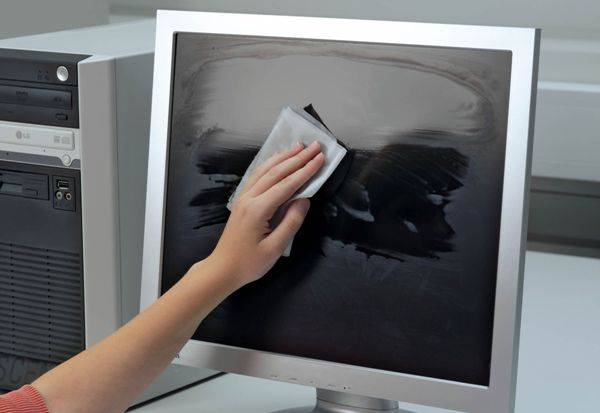
How to wash microfiber in a washing machine correctly
Time-bound housewives or those who do not want to wash by hand can use the washing machine. Rules for the safe washing of microfiber in a typewriter:
- Considering that the fabric is bulky, it is not recommended to load the drum as much as possible, it is quite enough to fill it by 70-80%.
- It is necessary to study the manufacturer's information on the label, which indicates the temperature regime for washing products from microfibers. Generally 40 to 60 degrees is recommended.
- Eliminate items from the drum that can stain ultra-fine fiber fabric. The things themselves with the addition of synthetic threads do not dye other products, but they can easily absorb other shades into the fibers.
- It is necessary to strictly follow the manufacturer's recommended dosage of the detergent.
- For stubborn dirt, it is recommended to use the mode, which will achieve a good final result.
- Preference is given to a delicate wash cycle.
- It is necessary to discard conditioners when rinsing.
- Drying products in a typewriter is not worth it.
Following the above-mentioned rules, housewives will extend the life of products made of super-durable fabric, while spending minimal effort.
Rules for use and care
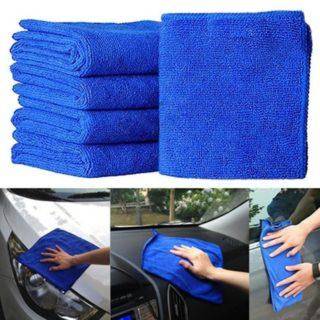 Microfiber Cloths for Car Wash
Microfiber Cloths for Car Wash
It is recommended that you purchase several microfiber wipes at once so that you can use everything alternately. Such rags require specific care, and therefore it is recommended to wash them separately from other things. In this case, it is unwise to waste electricity, detergent and other resources to clean one mitten.
These wipes need to be washed constantly to get rid of bacteria that accumulate in the spaces between the fibers. To disinfect them, a wash is required at 90-95 degrees Celsius. At home, it is required to carry out such a preventive measure 1-2 times a month. For daily washing, it is enough to set the temperature to 40 degrees Celsius.
Pre-cleaning is recommended at 40 degrees without the use of detergents. It is recommended to add a strictly defined amount of powder to the washing machine, an excessive amount can have a detrimental effect on the material, and it will also remain in the structure.
In order not to spoil the microfiber, it is not recommended to use chlorine bleach. It is best to use powder for colored fabrics or just low alkalinity. High temperatures can also harm the material, so it is recommended to purchase high-quality raw materials so that it lasts longer.
Note! Do not dry products near a battery or other heat sources. Microfiber and direct sunlight are harmful, it is recommended to leave the cloth to dry in a well-ventilated area
The use of fabric softener during washing can affect the properties of the material, and therefore it is not recommended to add it.
Few know what kind of microfiber fabric is, but those who have already met it are not ready to part. All synthetics cannot be equated in their bad types, since every day more and more new technologies appear that seek to change life for the better. In cleaning, such a breakthrough is possible thanks to microfiber napkins.
Fundamental rules
Improper washing can ruin the product, breaking the fiber structure. There are several rules that will help you understand how to wash microfiber correctly:
- the water temperature should not exceed 40-600;
- you cannot boil;
- do not tumble dry or dry on a radiator;
- you cannot iron such products;
- do not use bleaches to remove stains, especially with chlorine.
It is also important to know how you can wash such products. Laundry soap or liquid detergent is recommended
Powder is difficult to rinse out of microfiber fibers and will make the fabric stiff.
Advice! It is not recommended to add conditioner. He also clogs the fibers, after which the thing will have to be thoroughly rinsed.
Different microfiber
The main
advantage microfiber napkins consists in weaving them. Fine threads allow
the material can penetrate into the most difficult-to-reach recesses on surfaces and
to collect moisture or dirt, and a sufficiently dense structure allows you not to leave
divorces.
Microfiber rags are divided according to the length of the pile. The shortest is perfect for
washing windows and mirrors.

“My favorite is the mirror napkin. How I did not like to wipe mirrors before. Continuous divorce and torment. Until I found a mirror napkin. It does not require the use of special tools, it is enough to slightly moisten it with water and wipe the surface, ”Anastasia Borkan, creator of the Atmosphere of Wellbeing project, shared her experience.
They also do not require the use of special detergents. Long-nap microfiber cloths are suitable for the maintenance of varnished, polished surfaces. Such rags collect dust on their soft fibers, preventing it from scattering in the air.
But you can only wipe the lacquered surfaces with a dry cloth, Borkan added.
High-density microfiber cloths are designed to absorb moisture well, are suitable for cleaning floors and are great in the kitchen.
You need to wash microfiber cloths
at least once a week. Better in a washing machine at 60 degrees
or higher.

